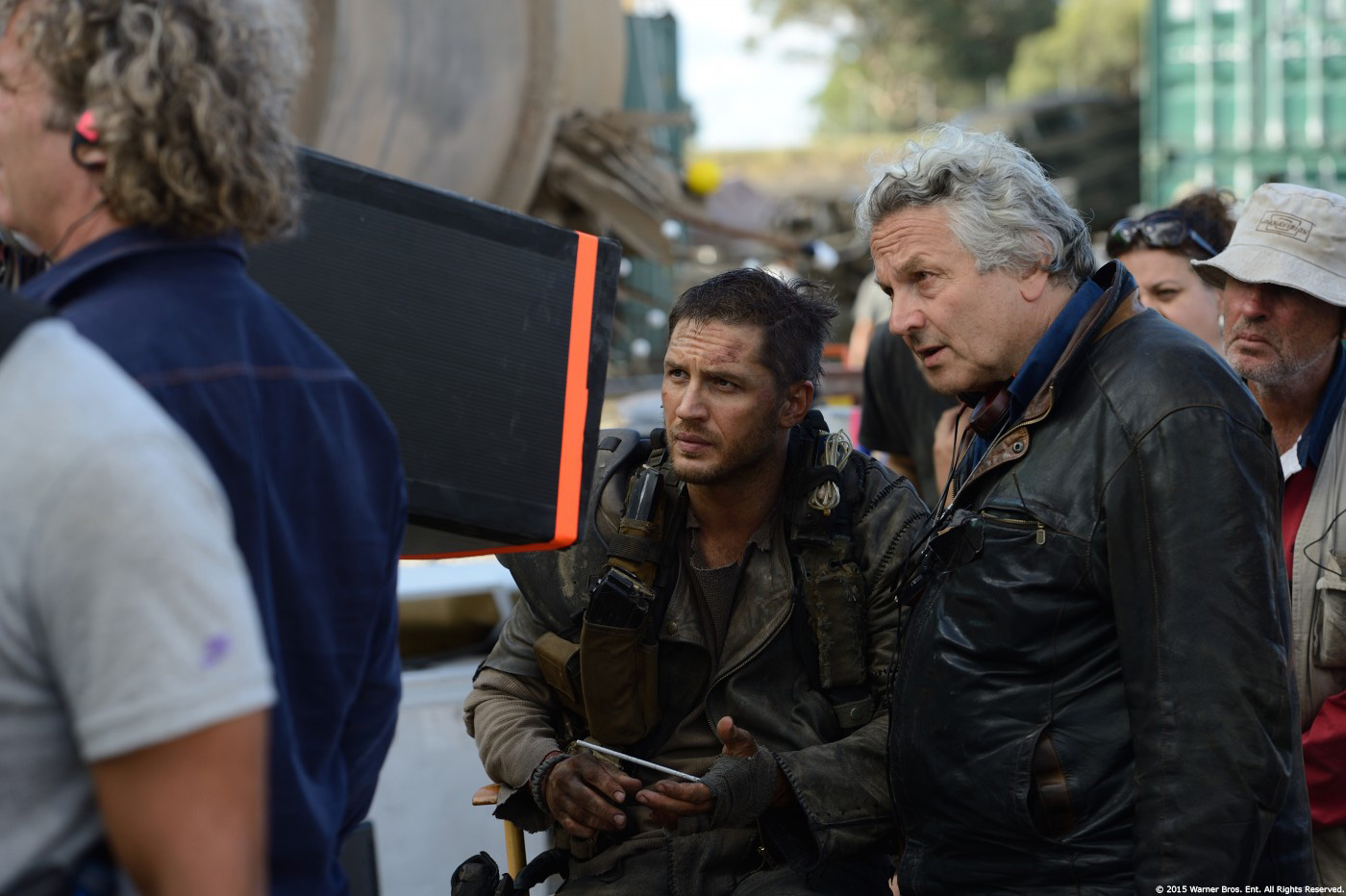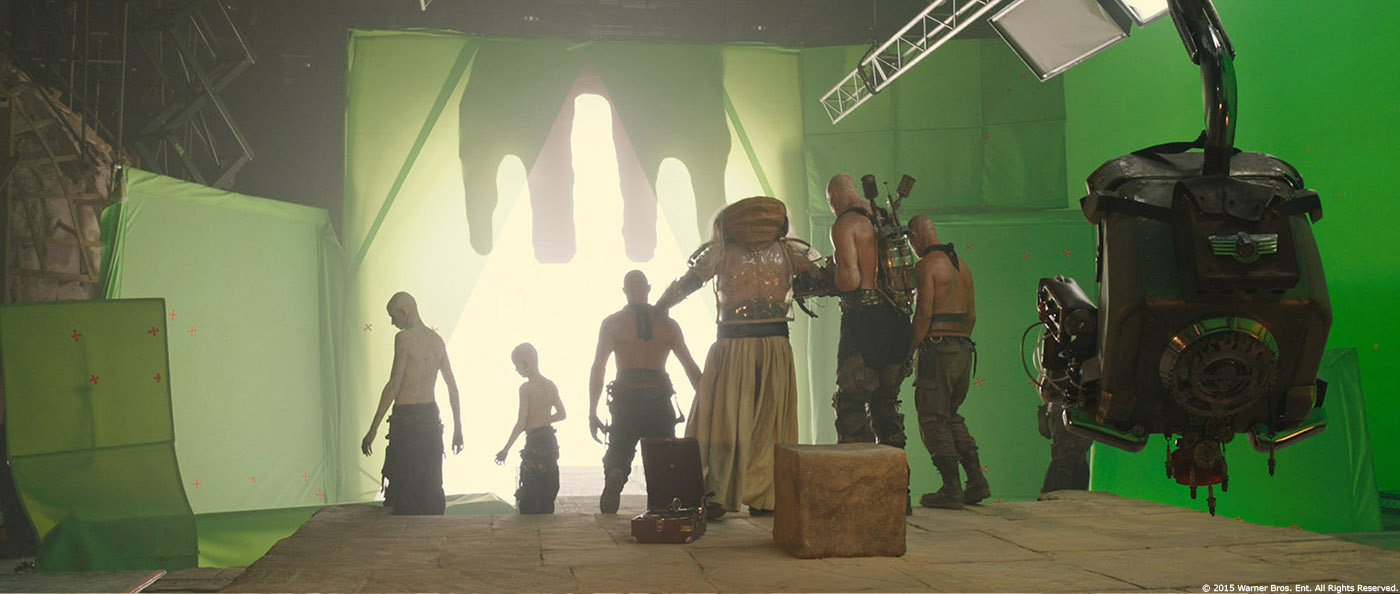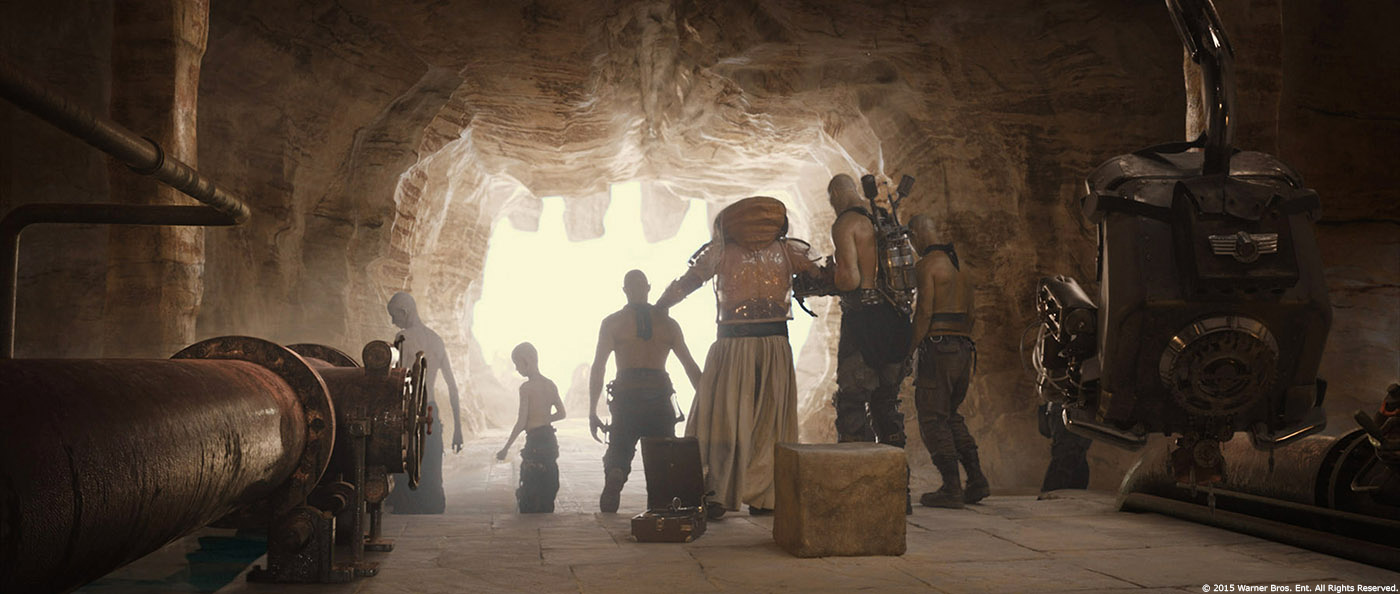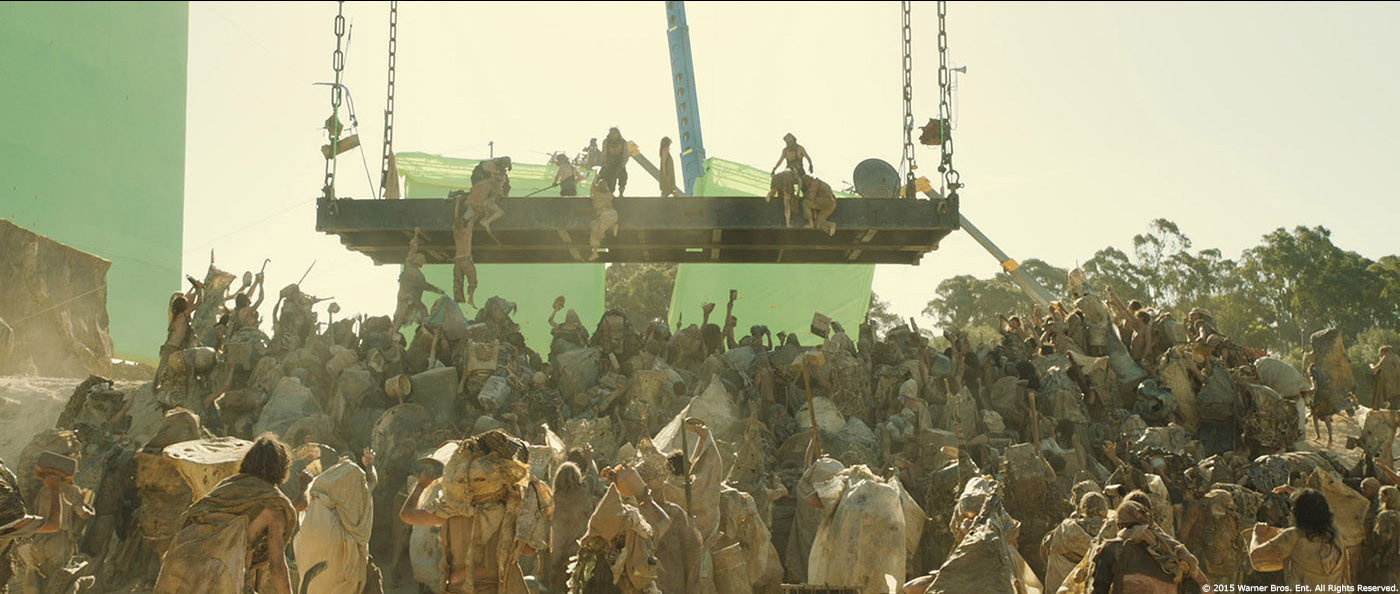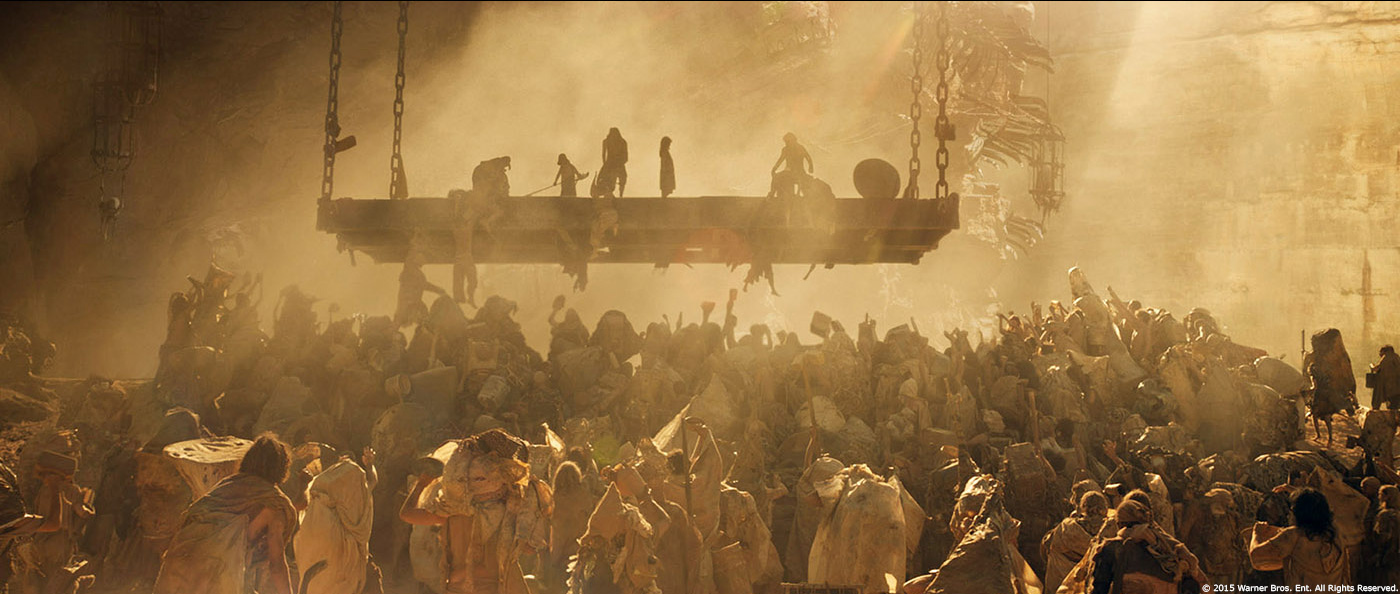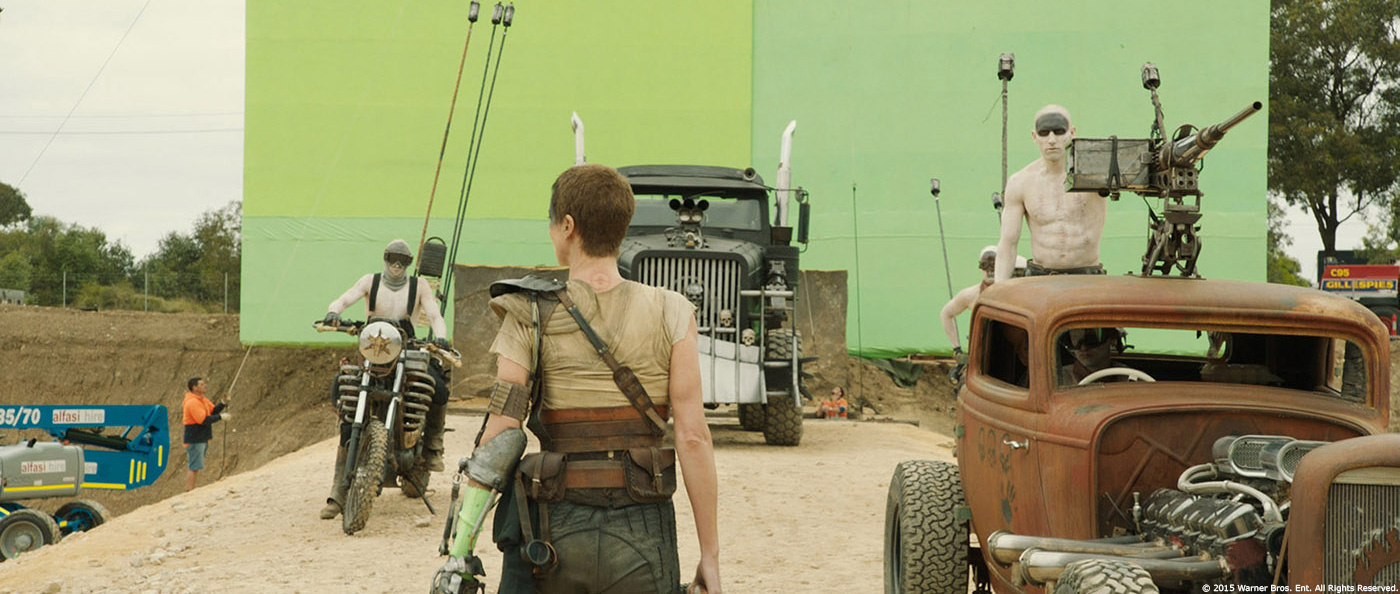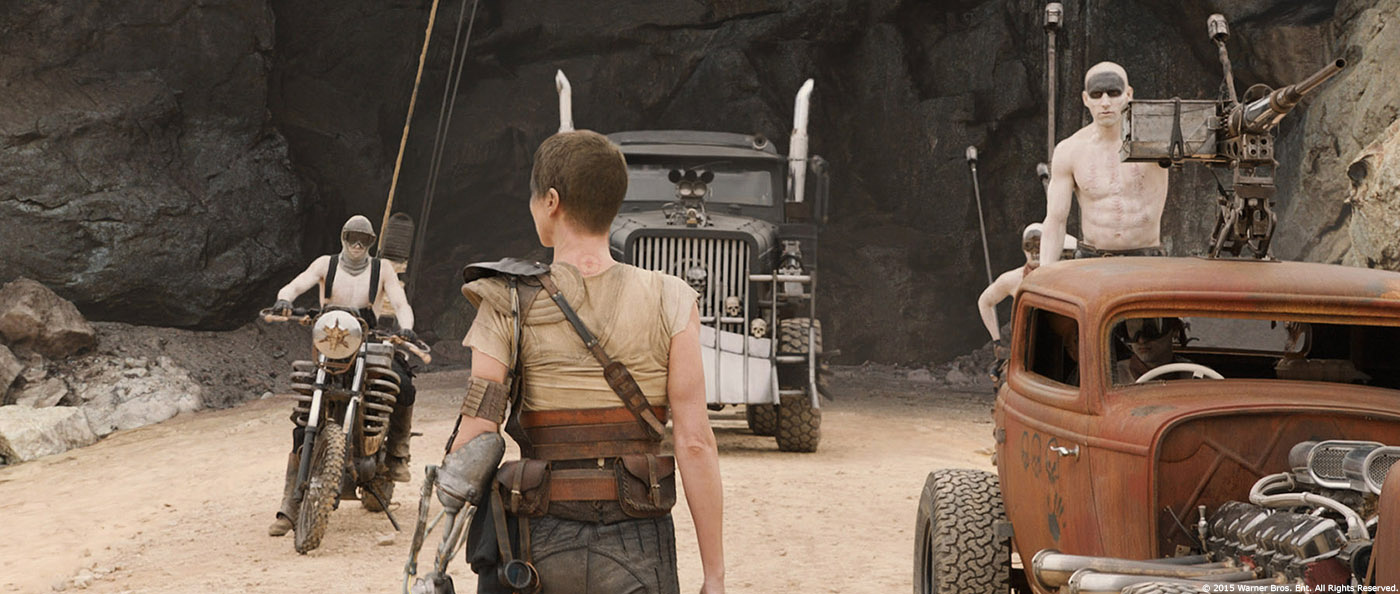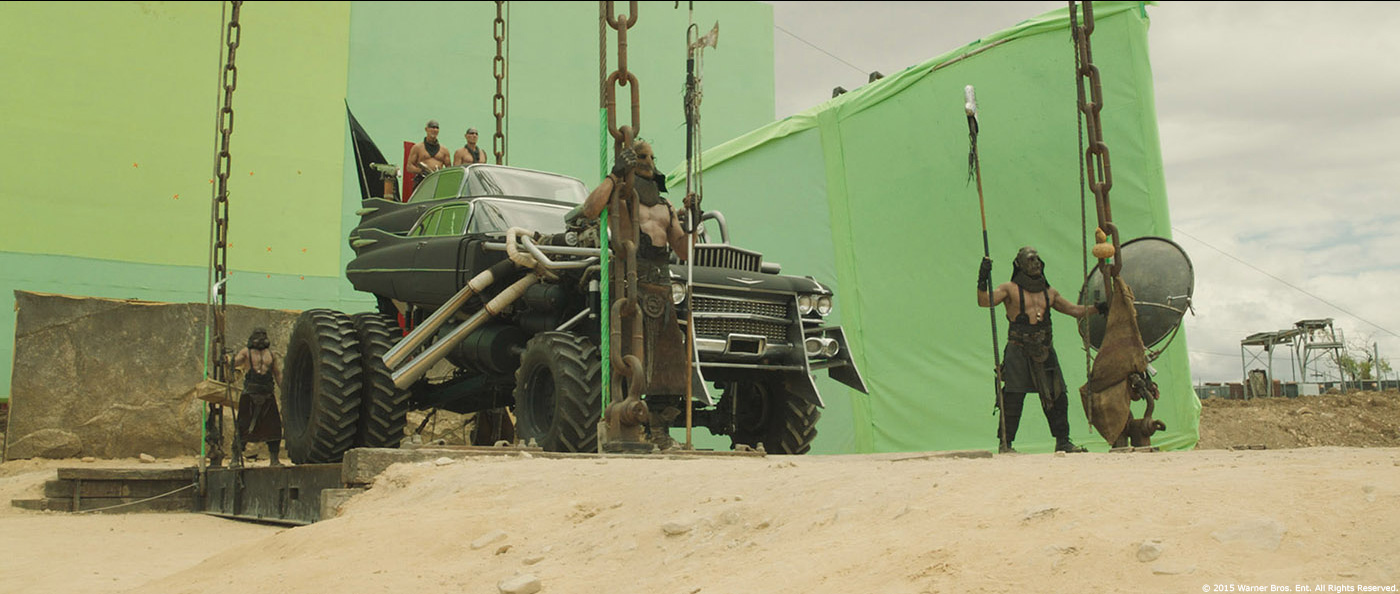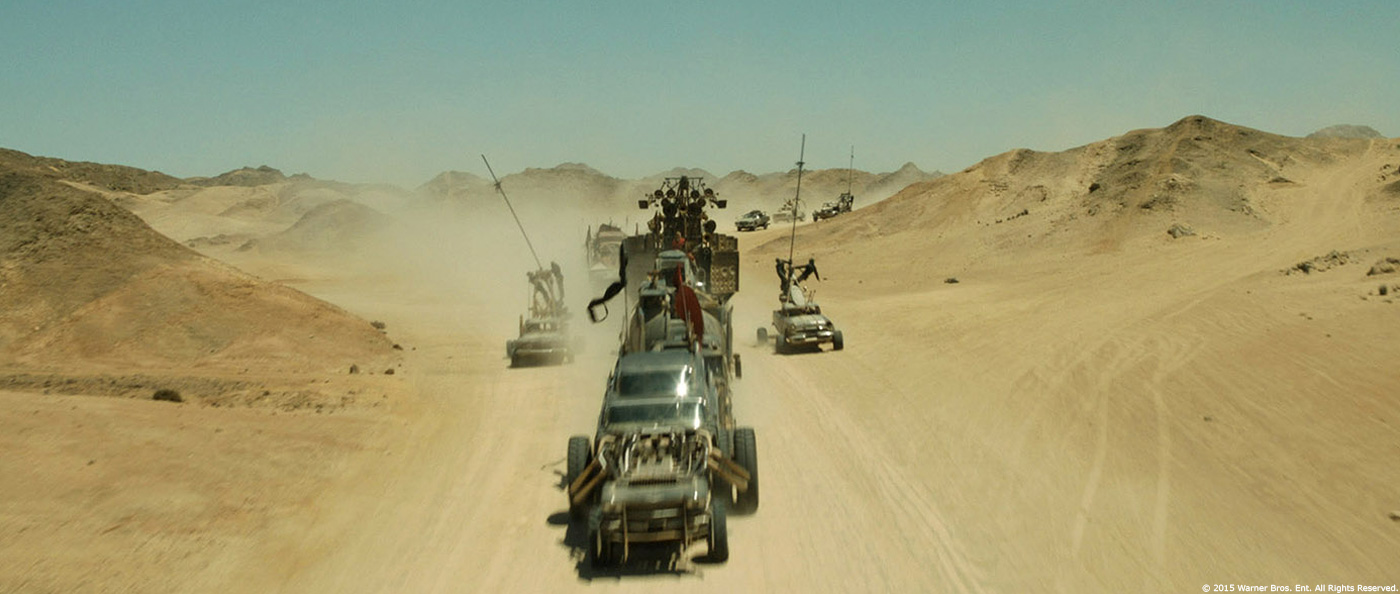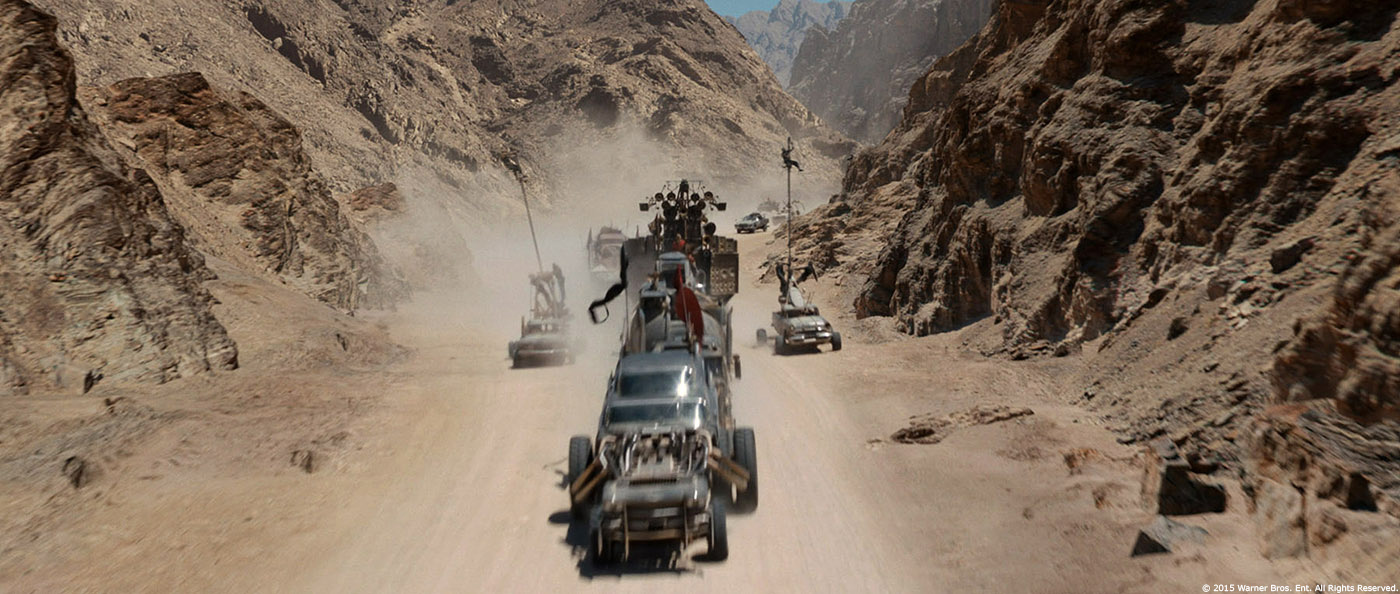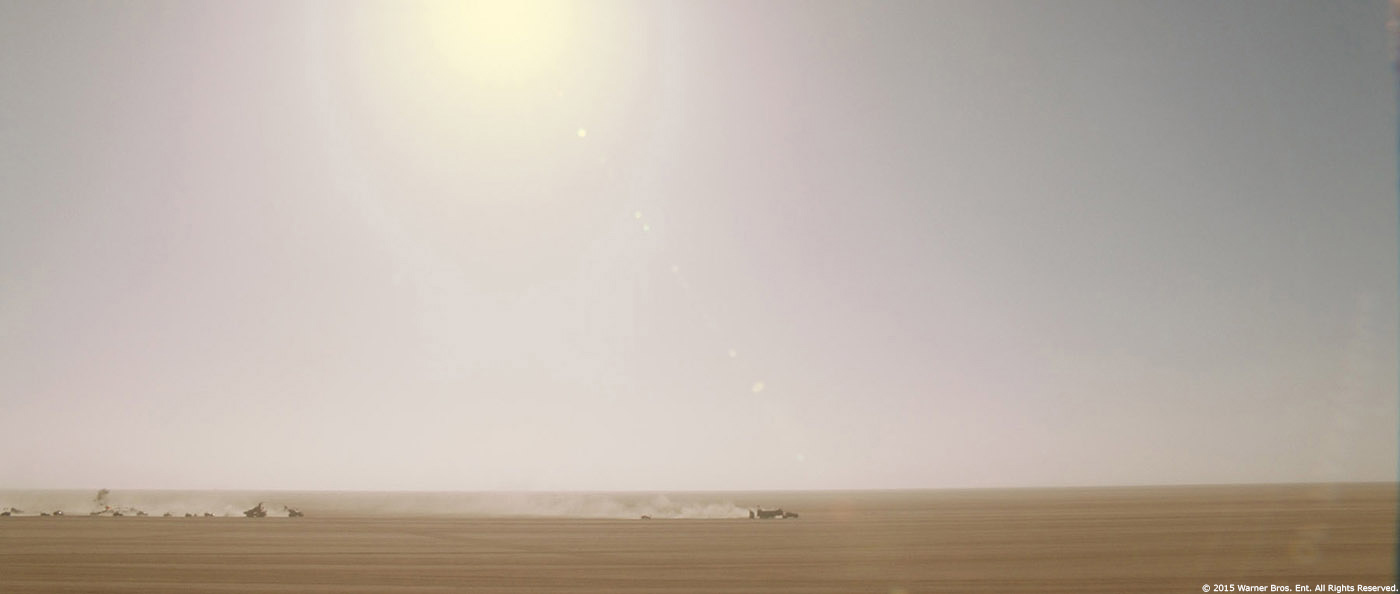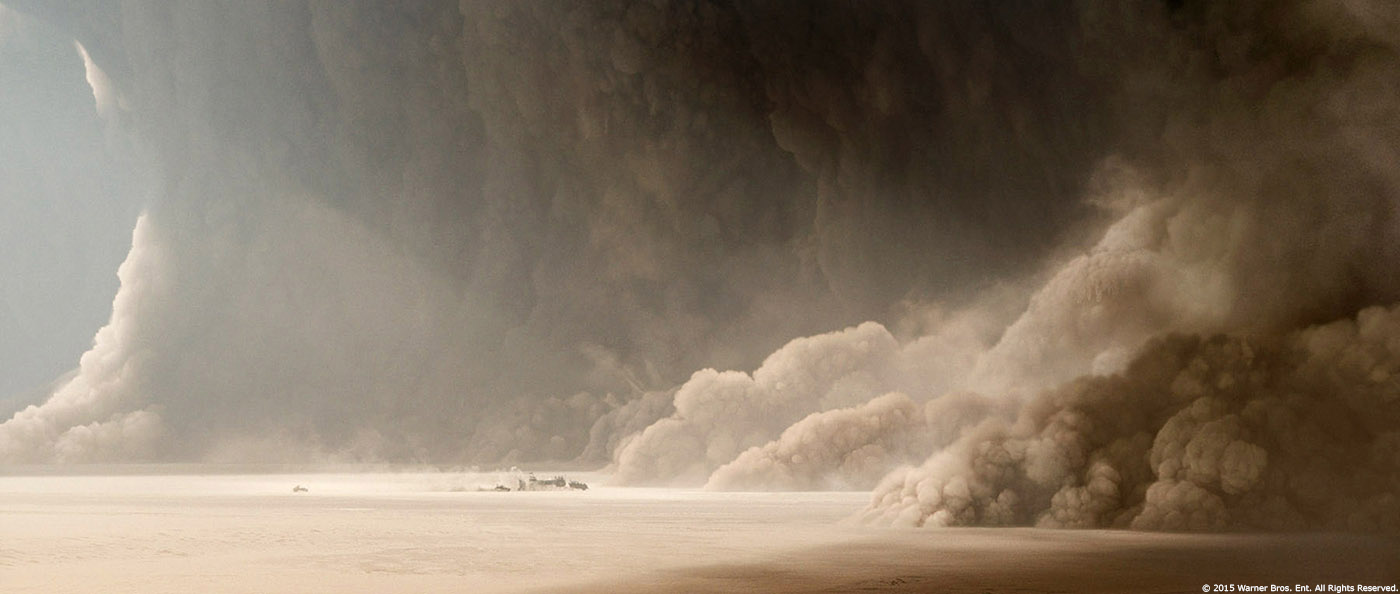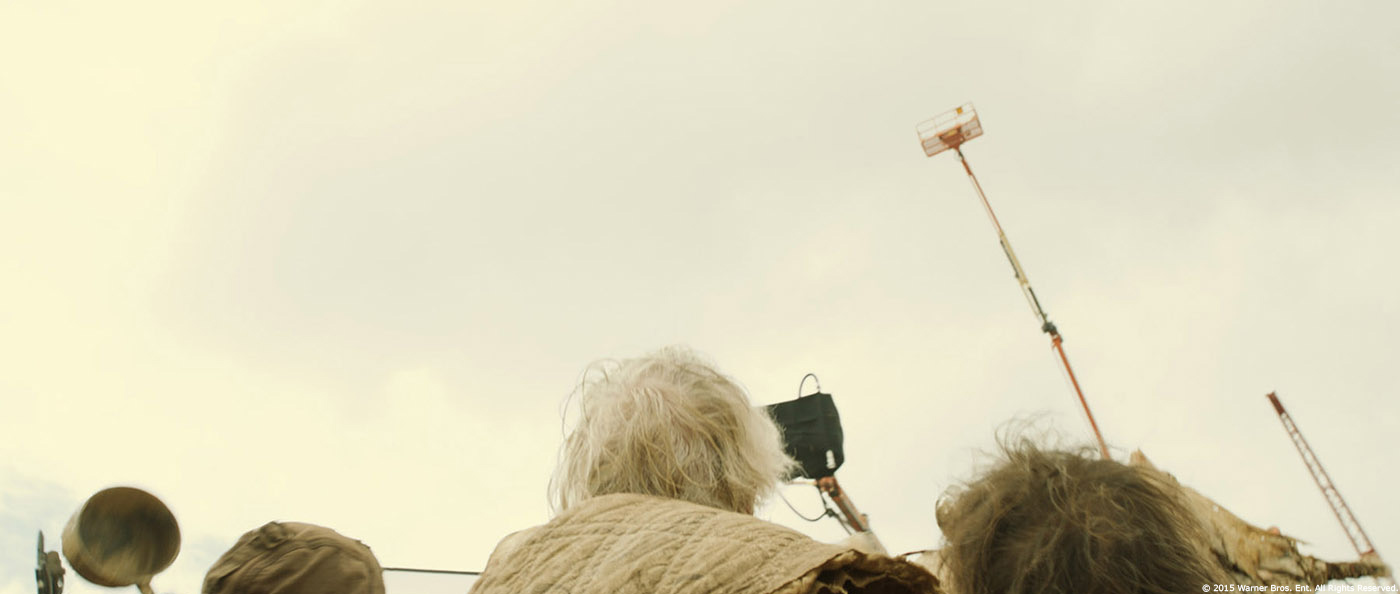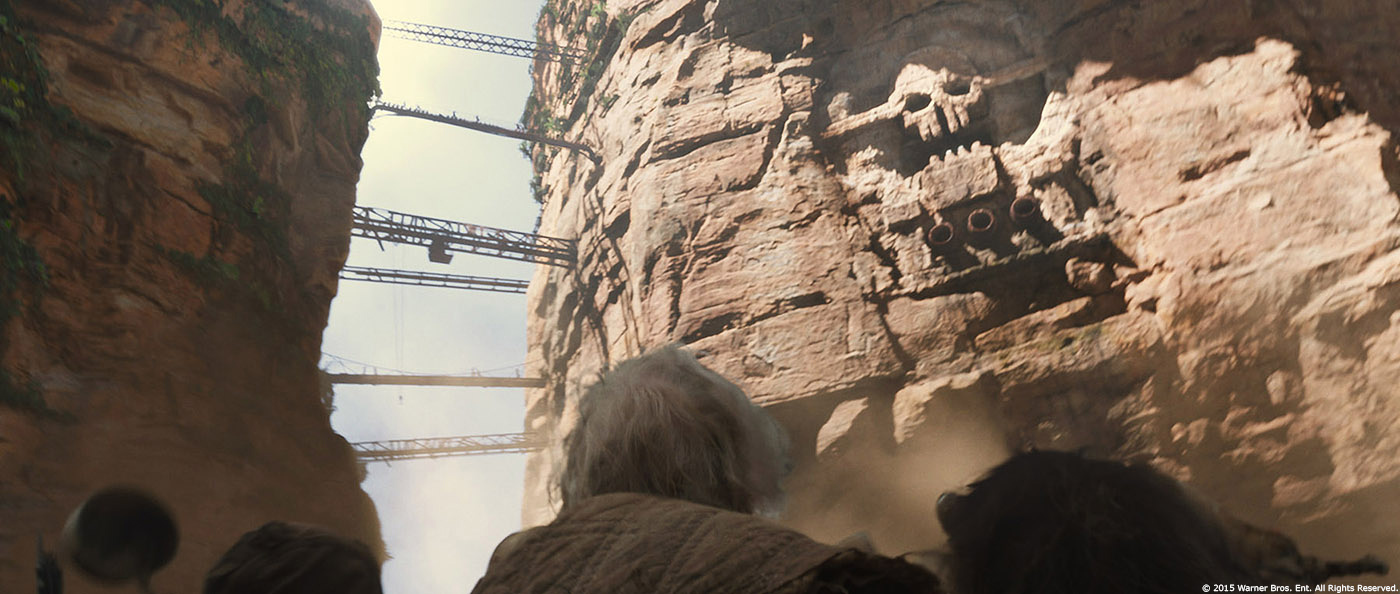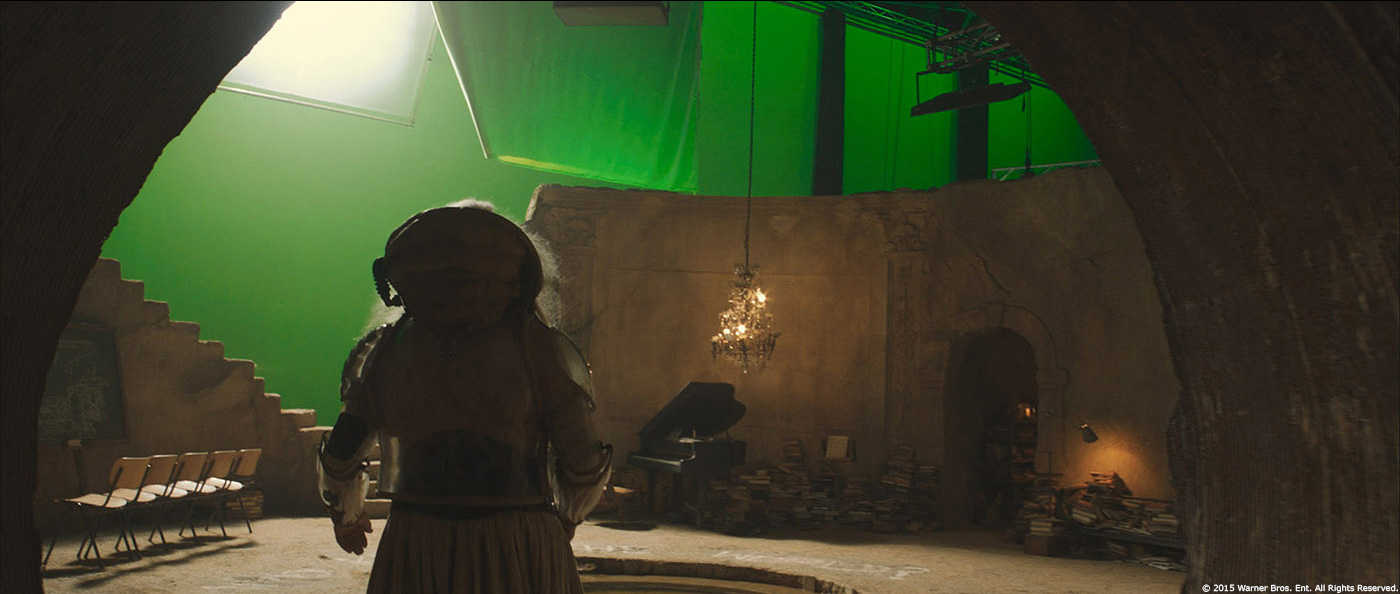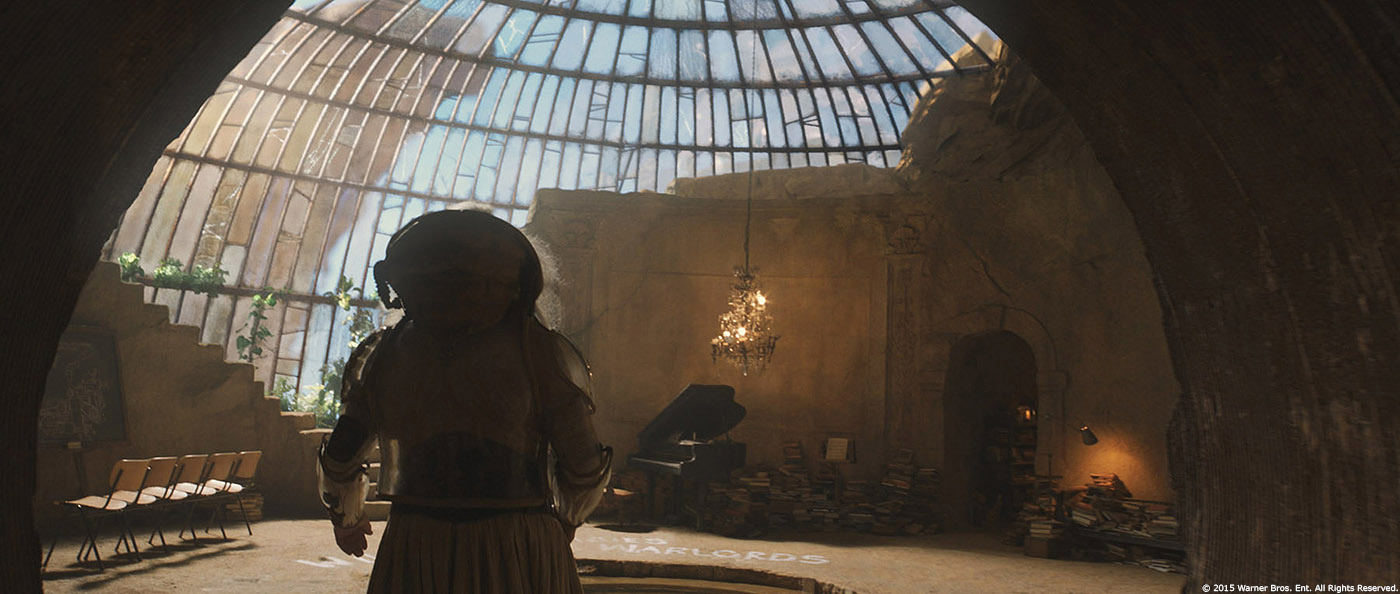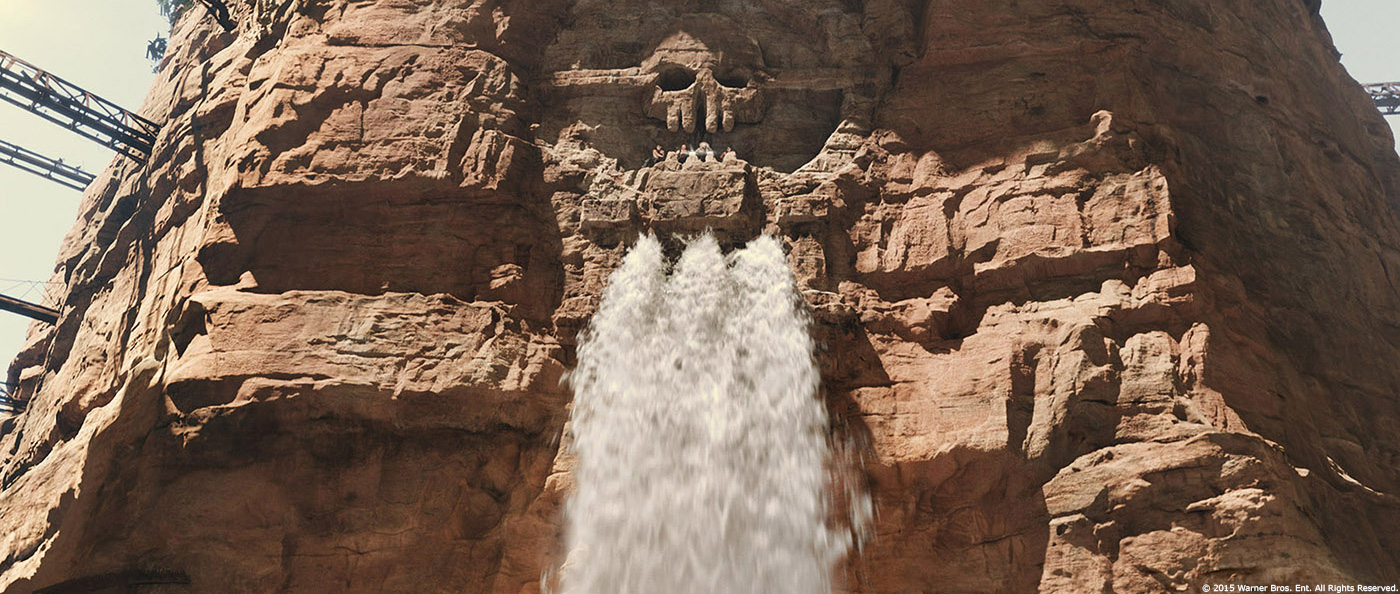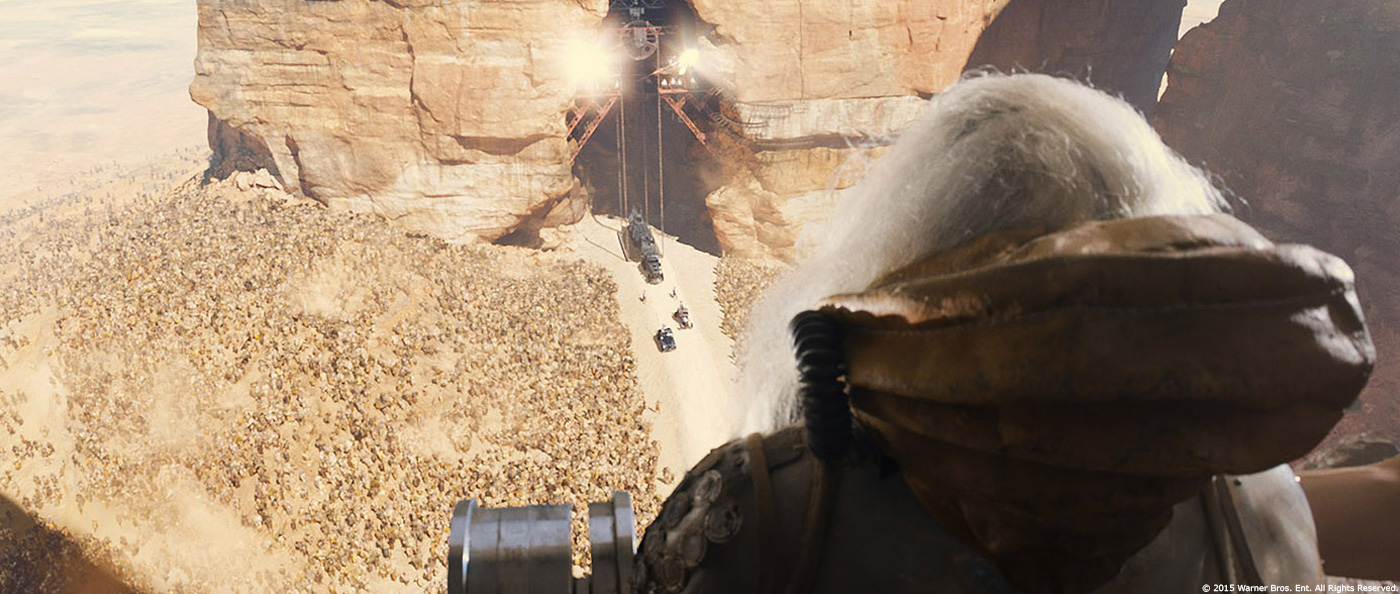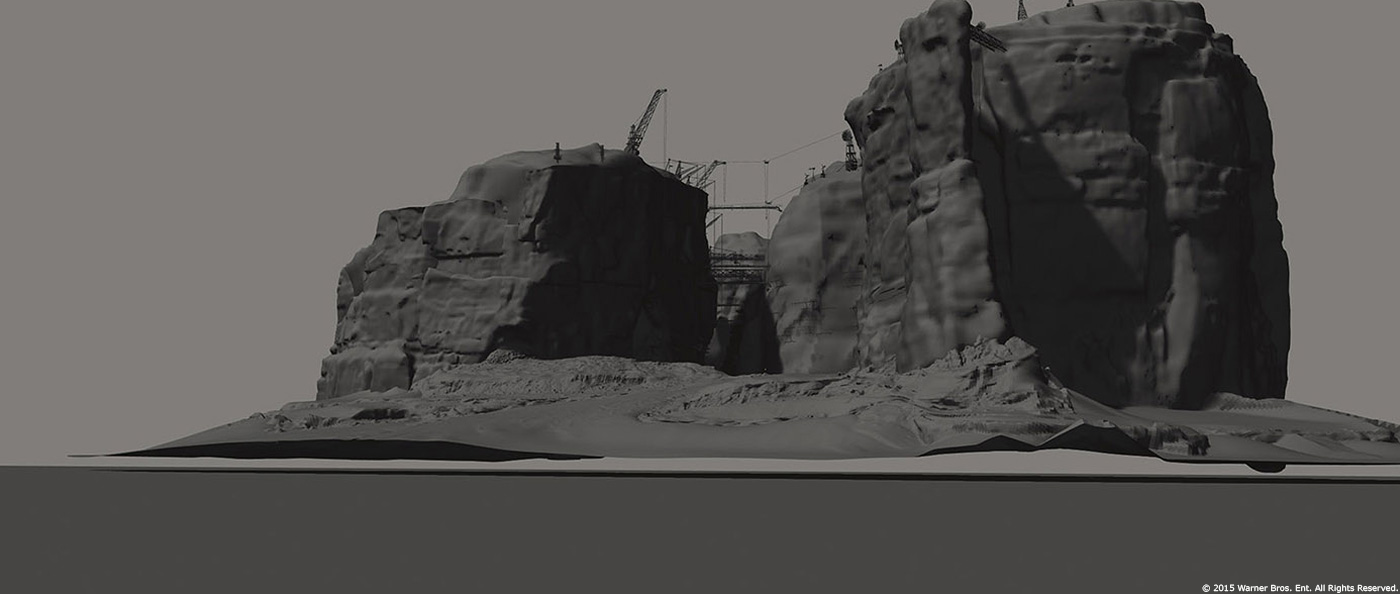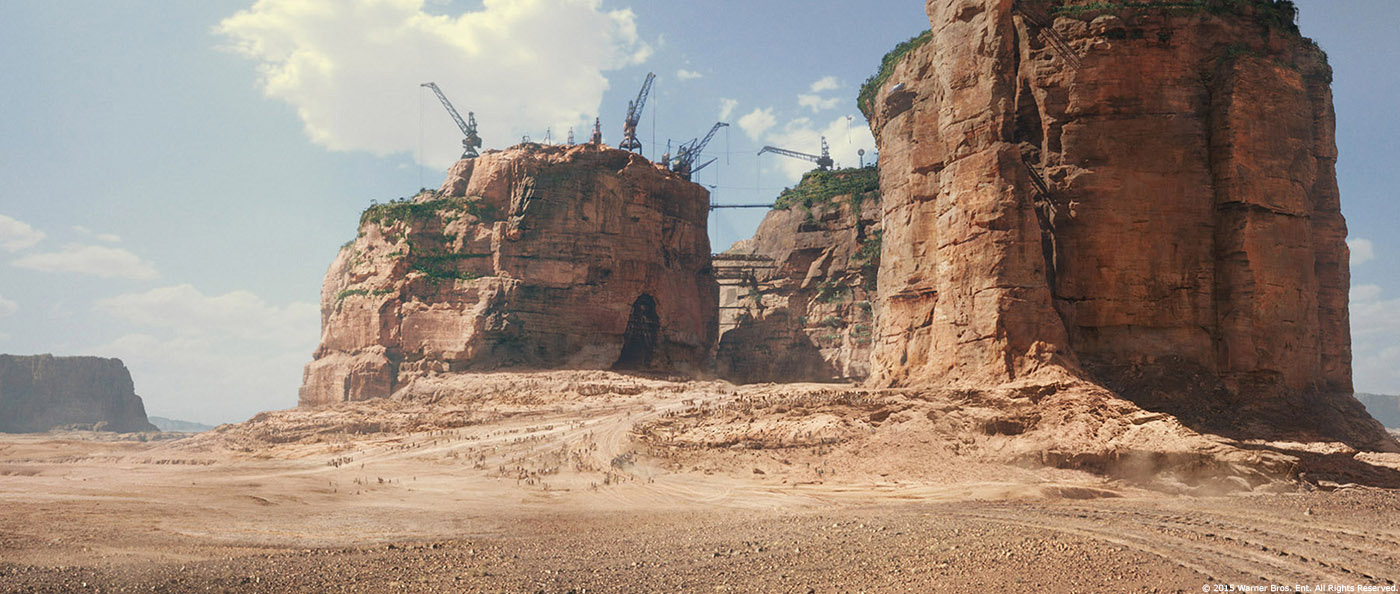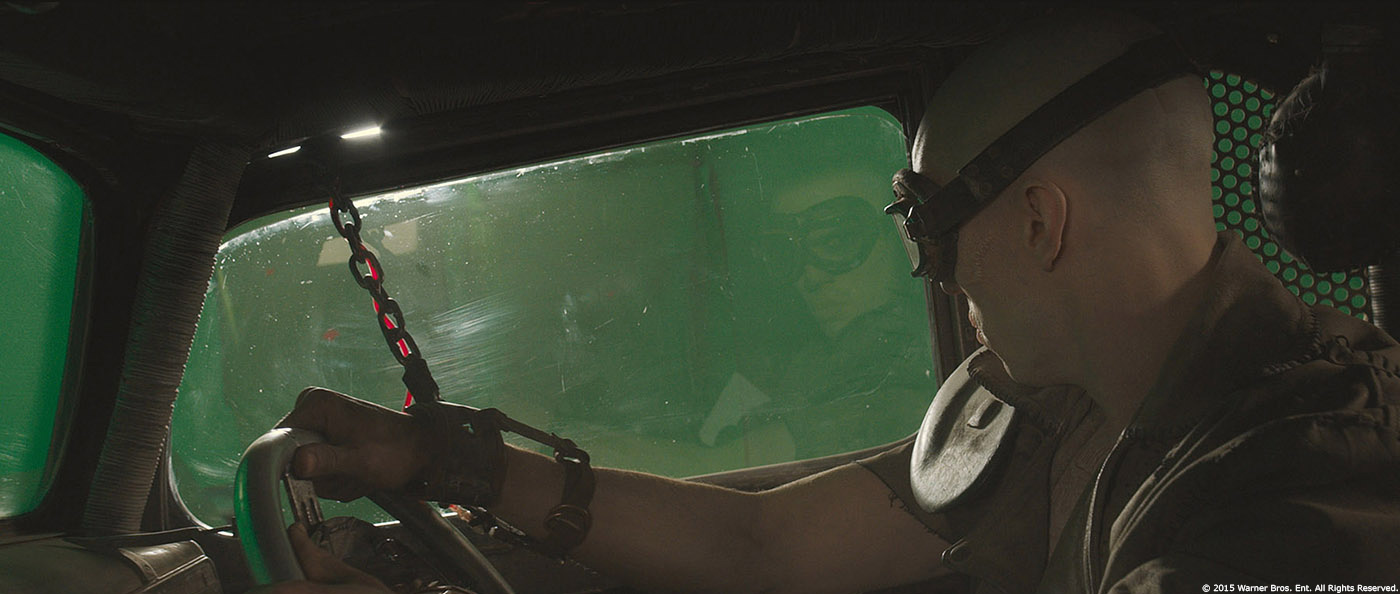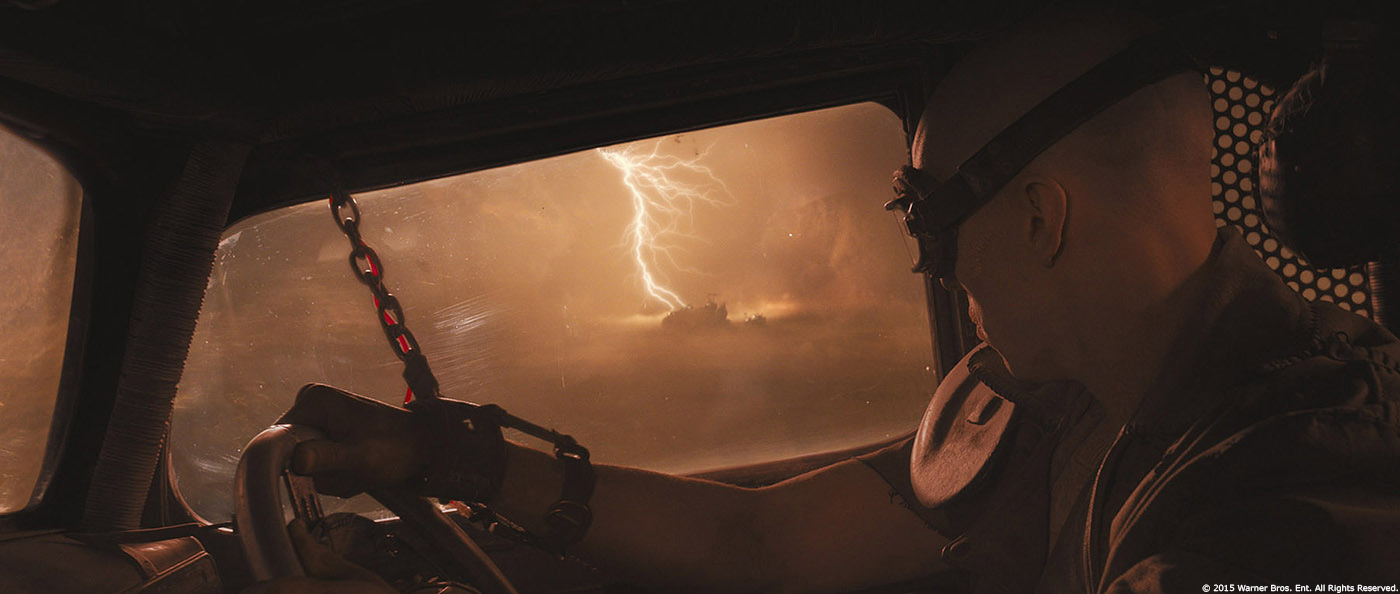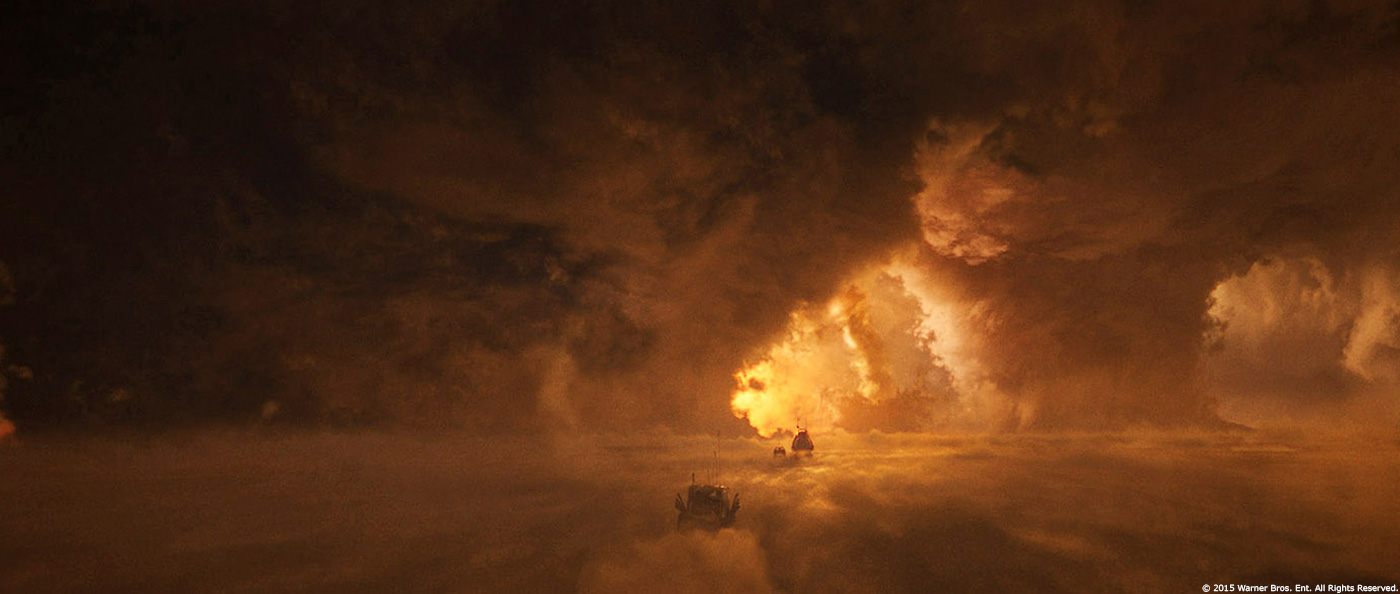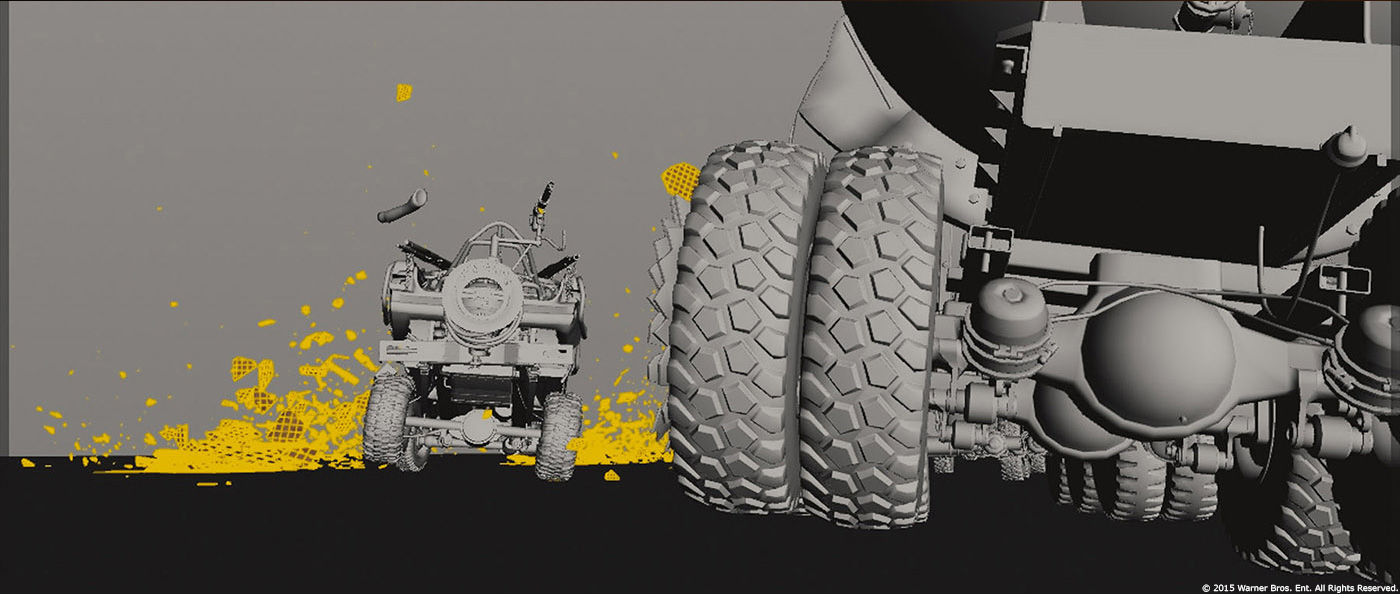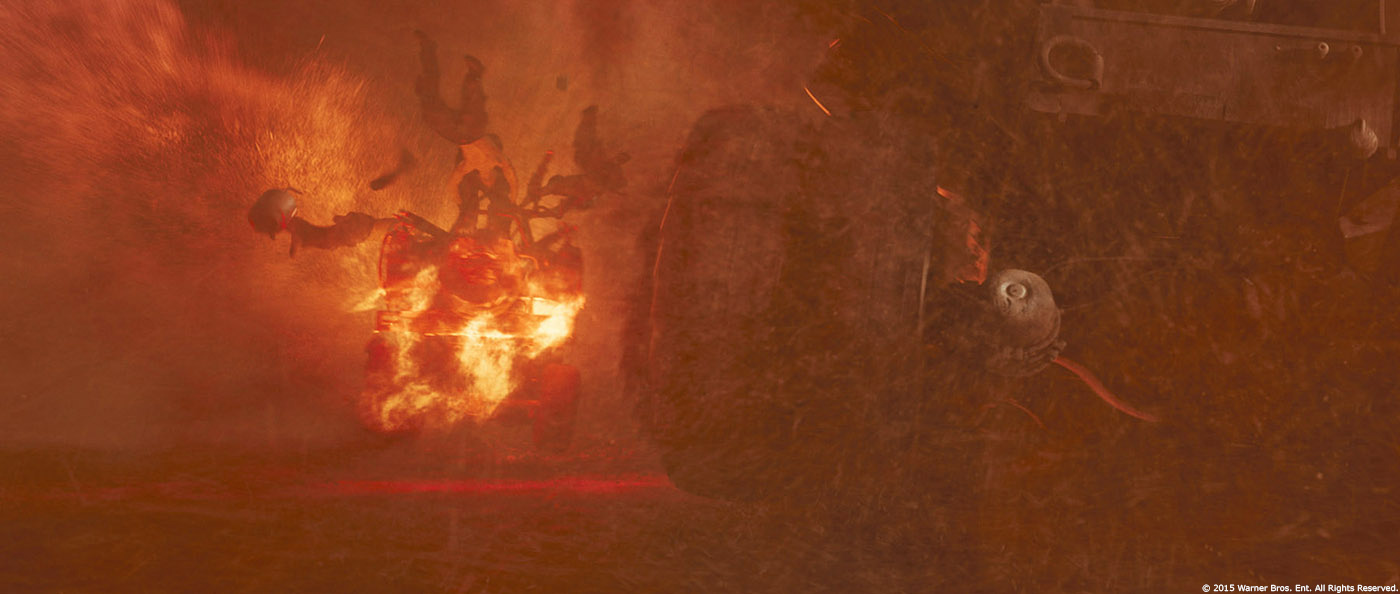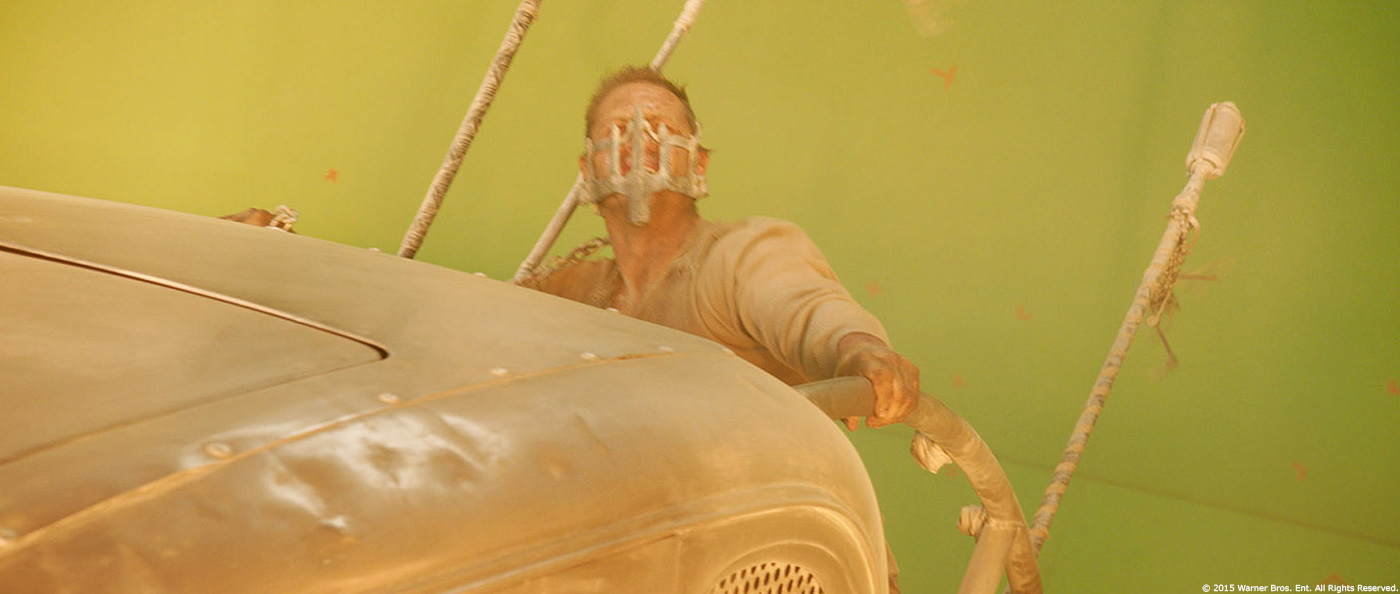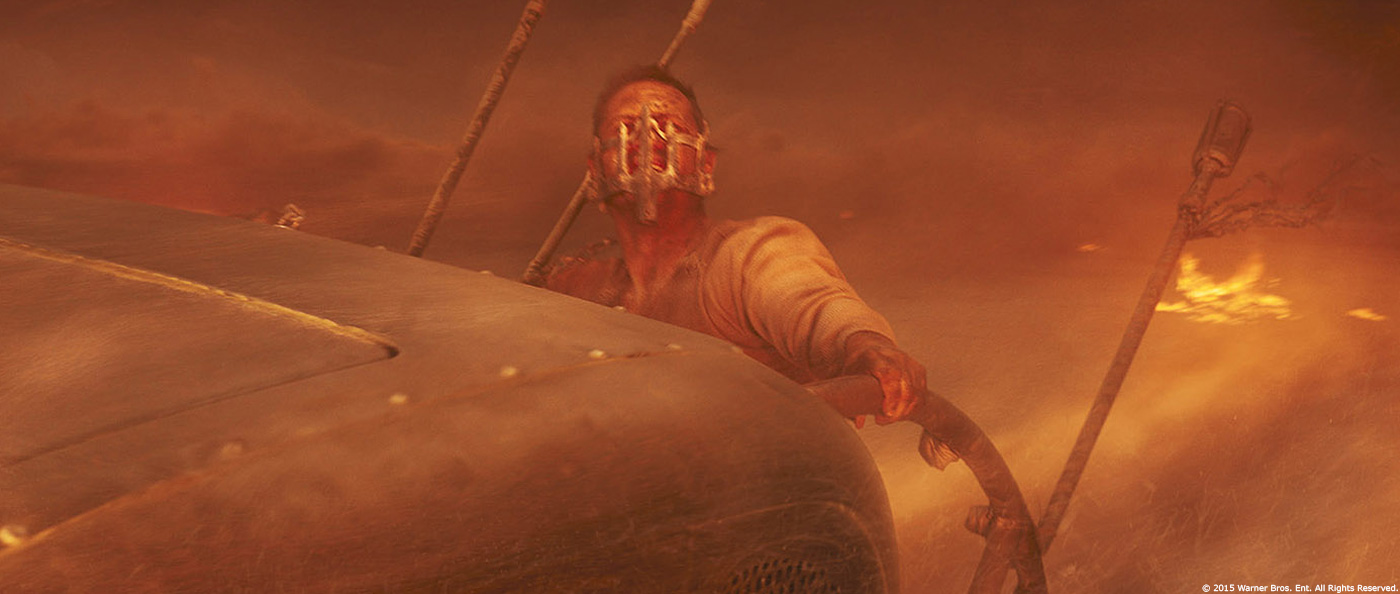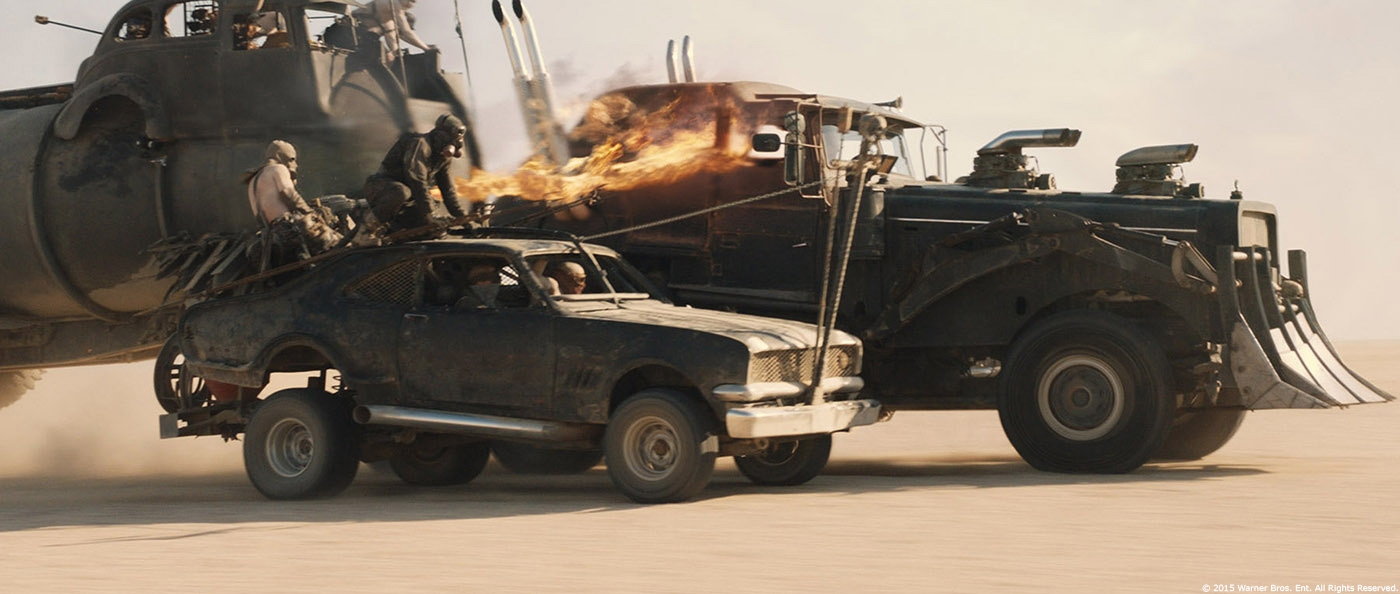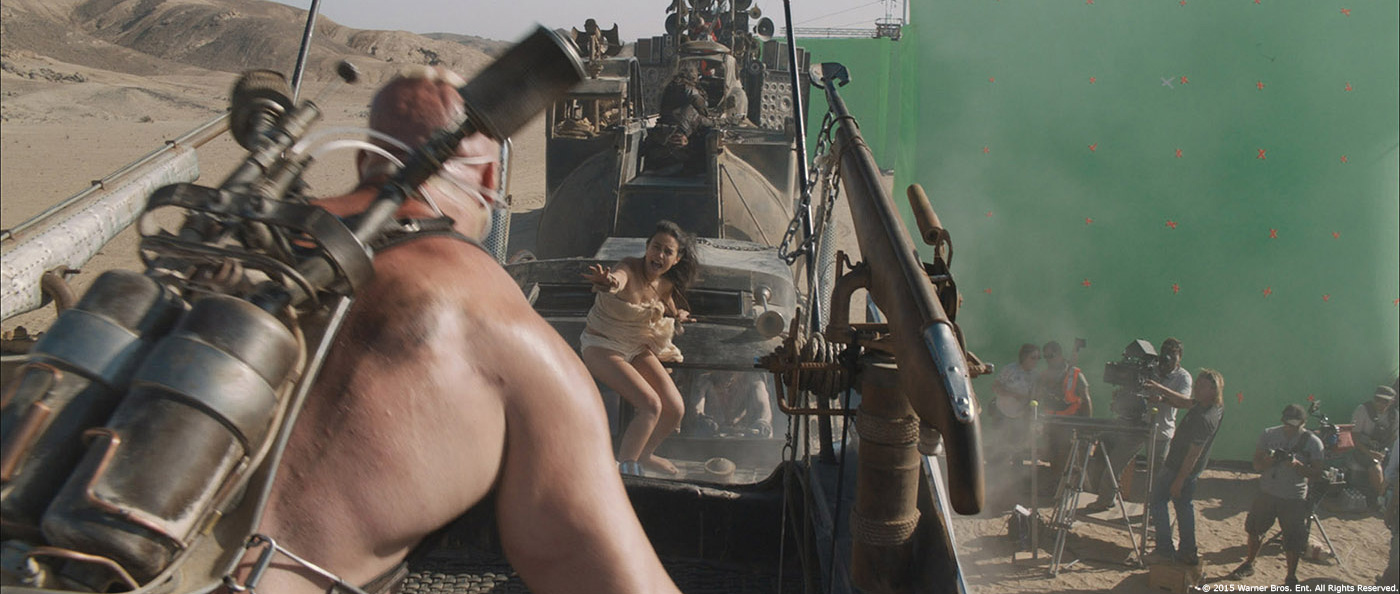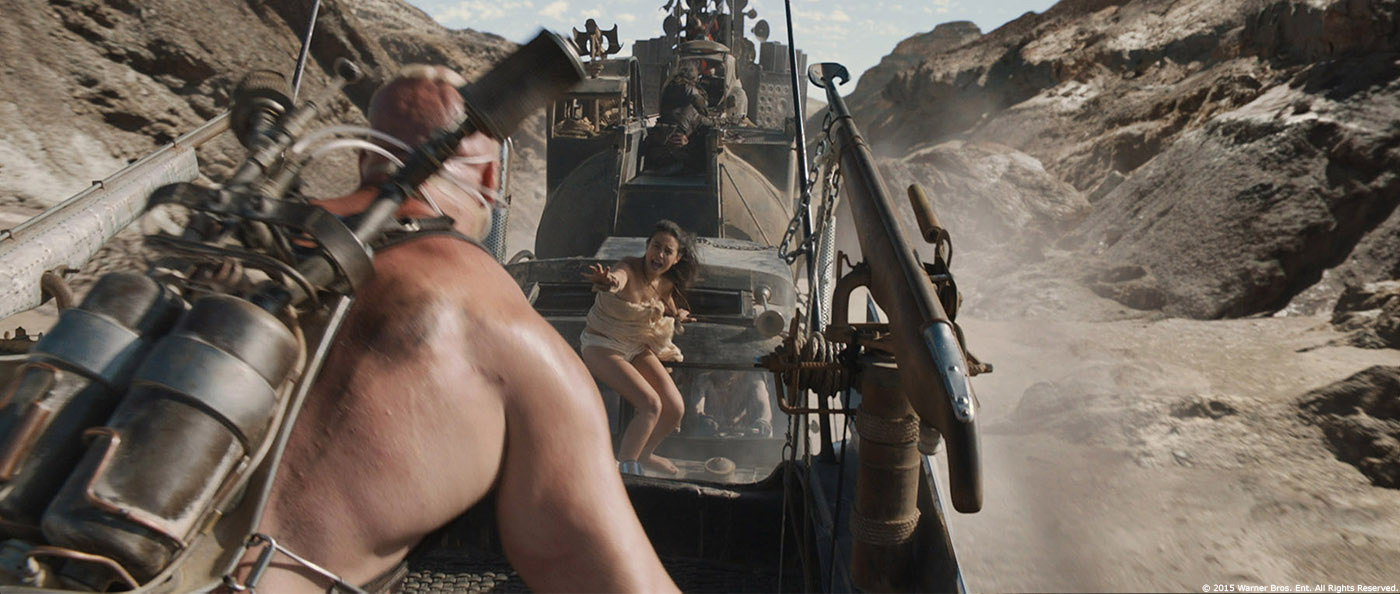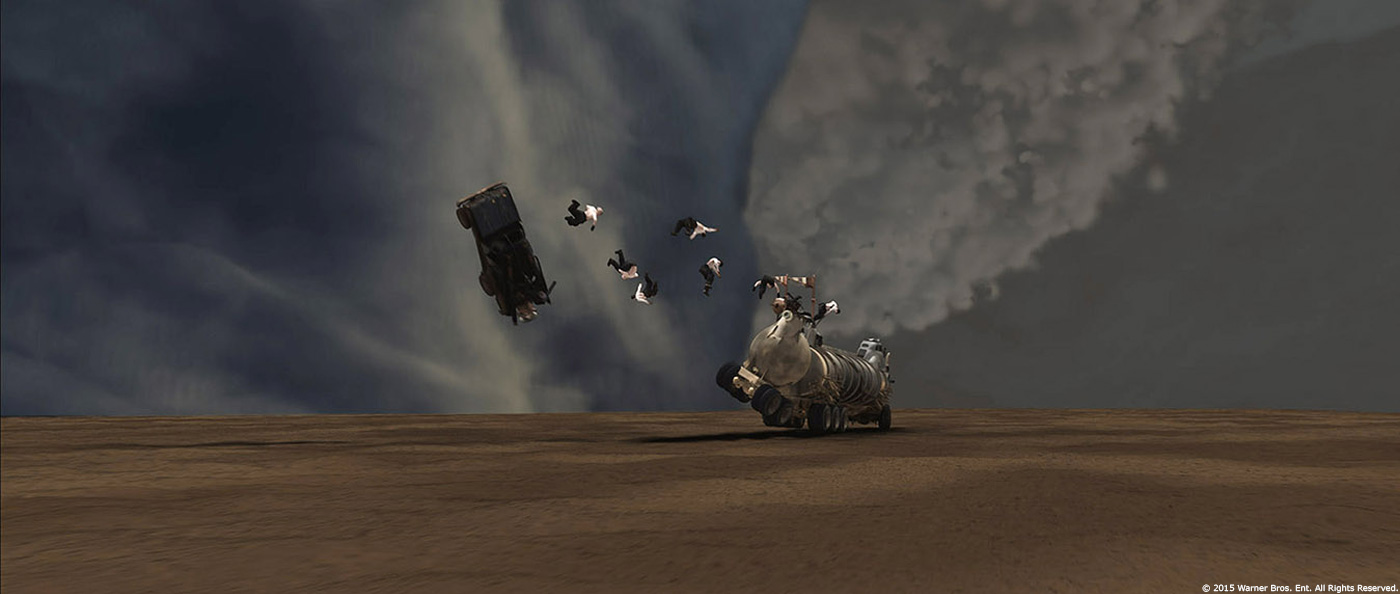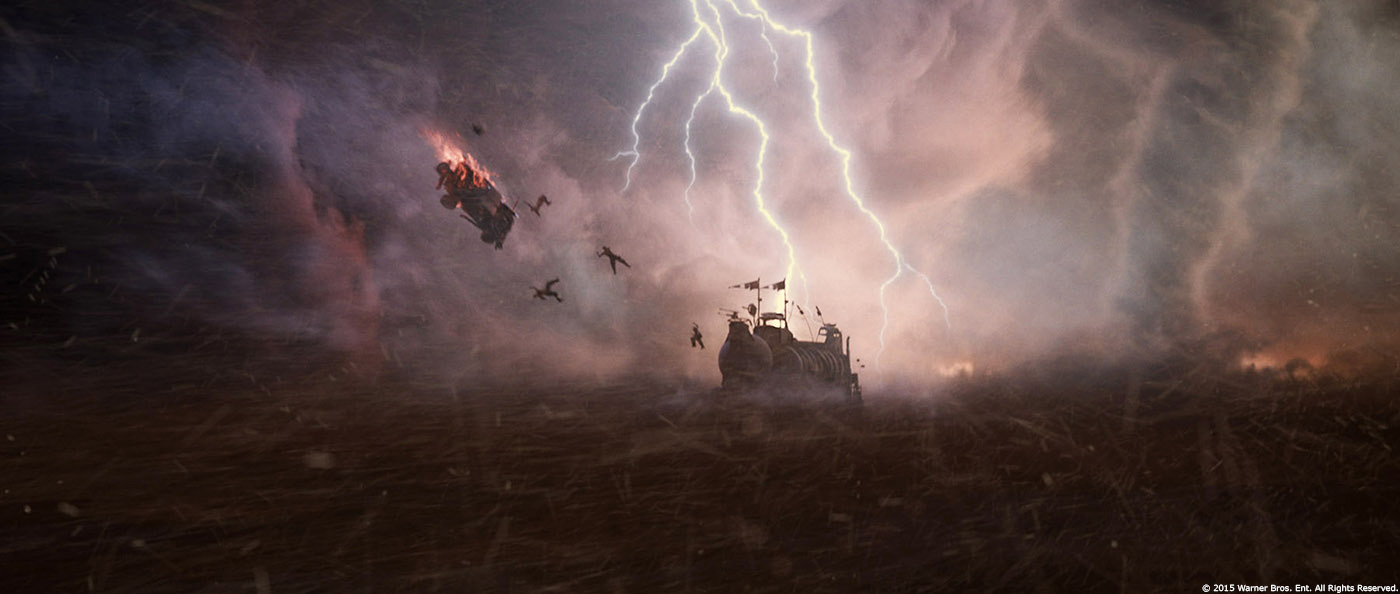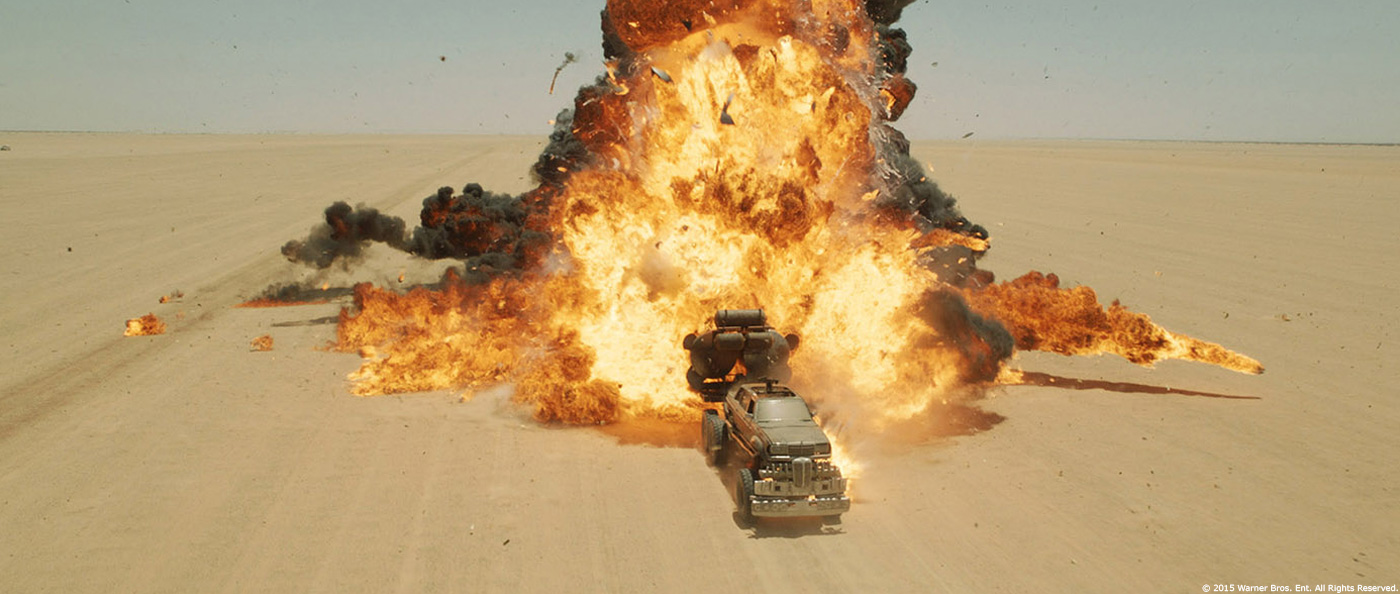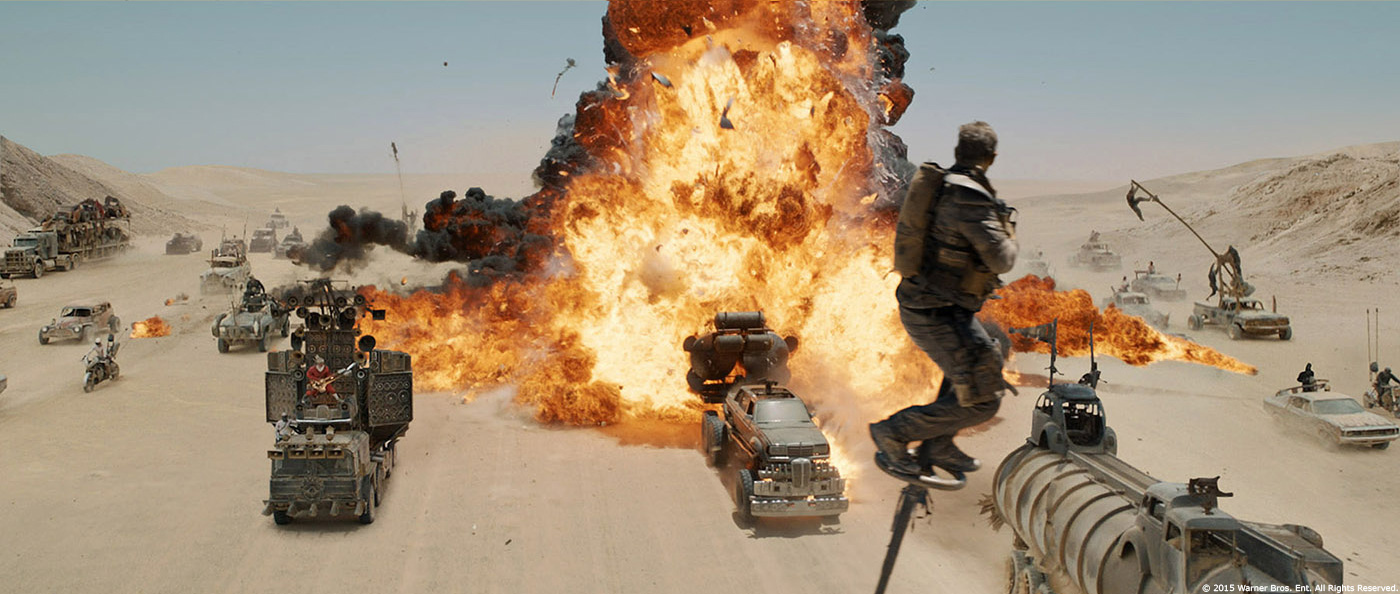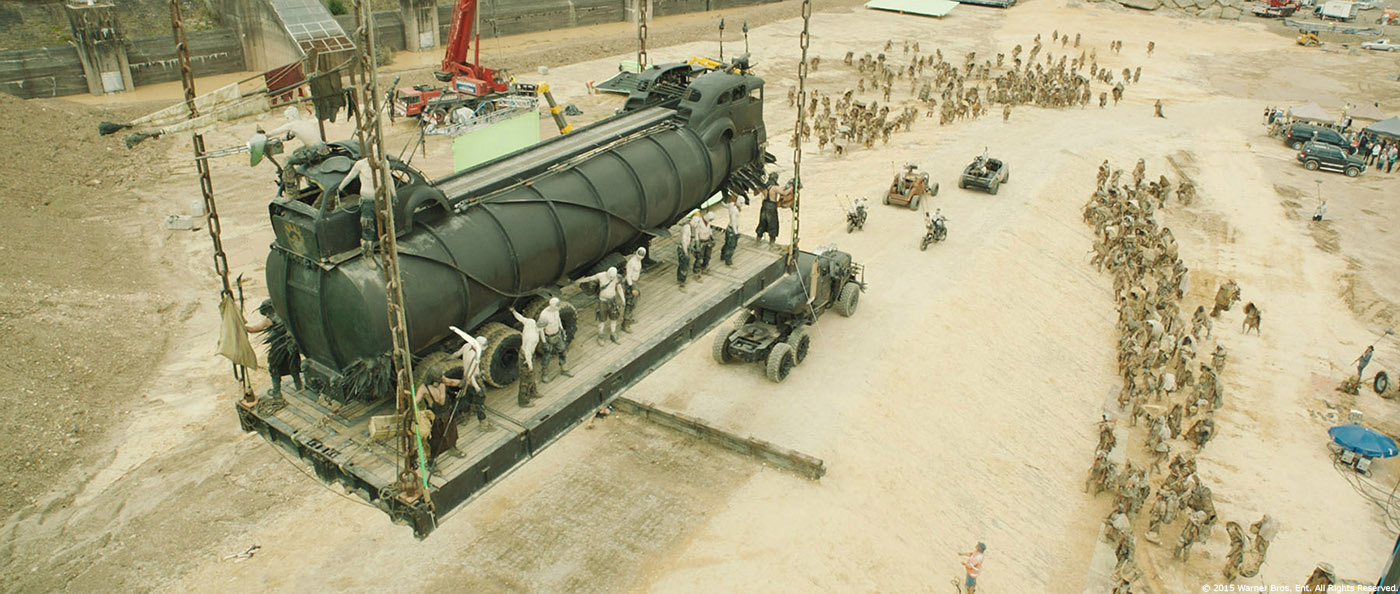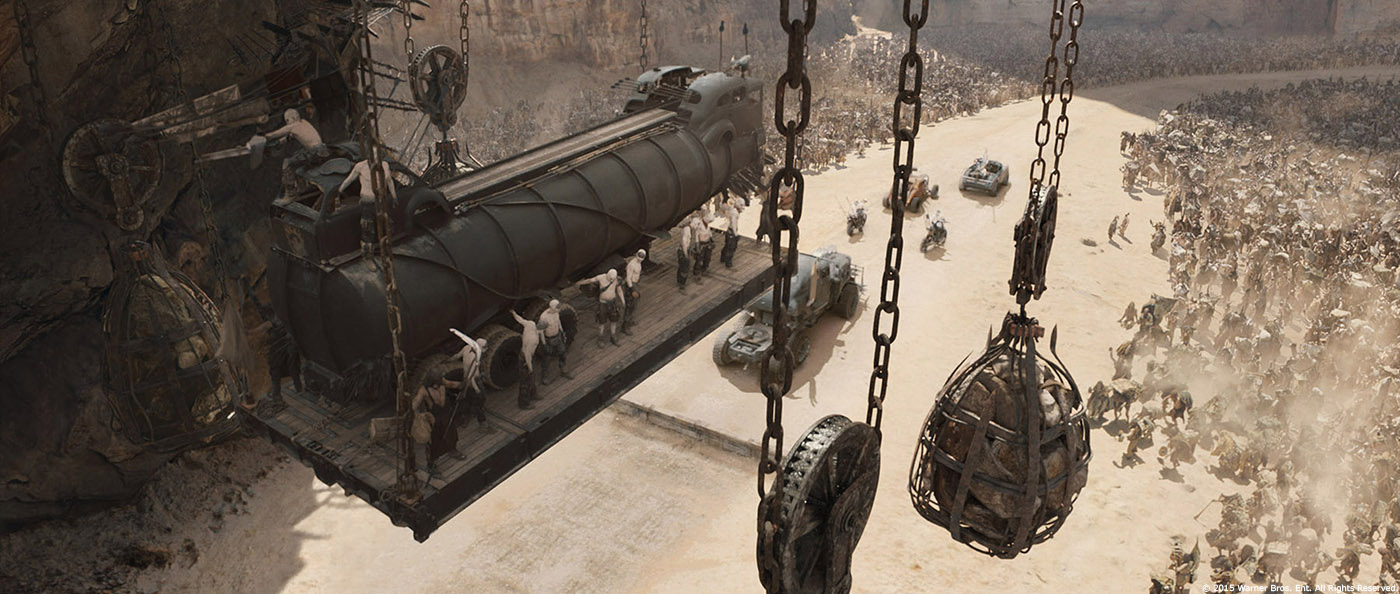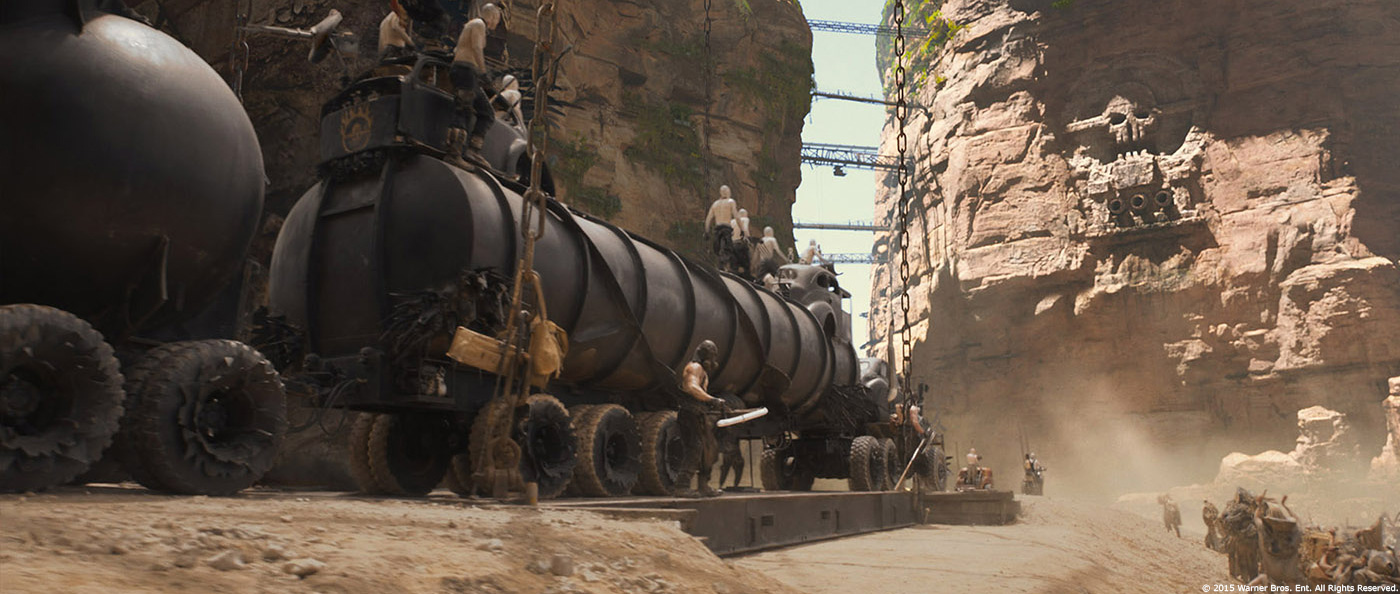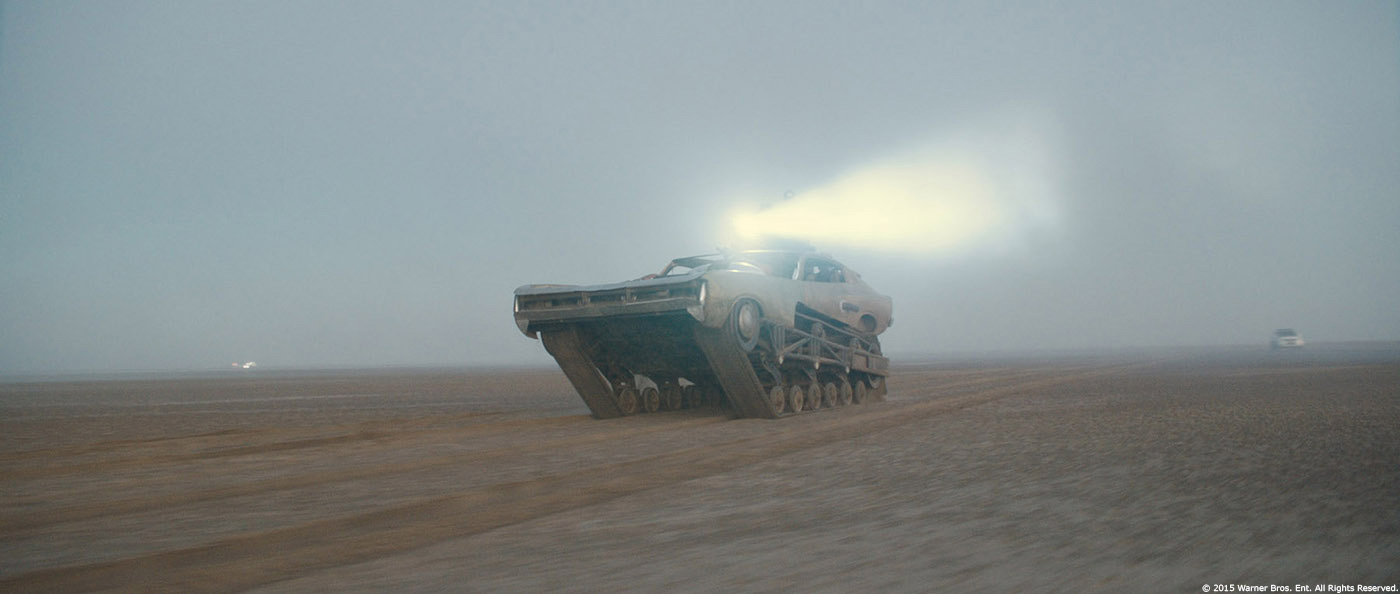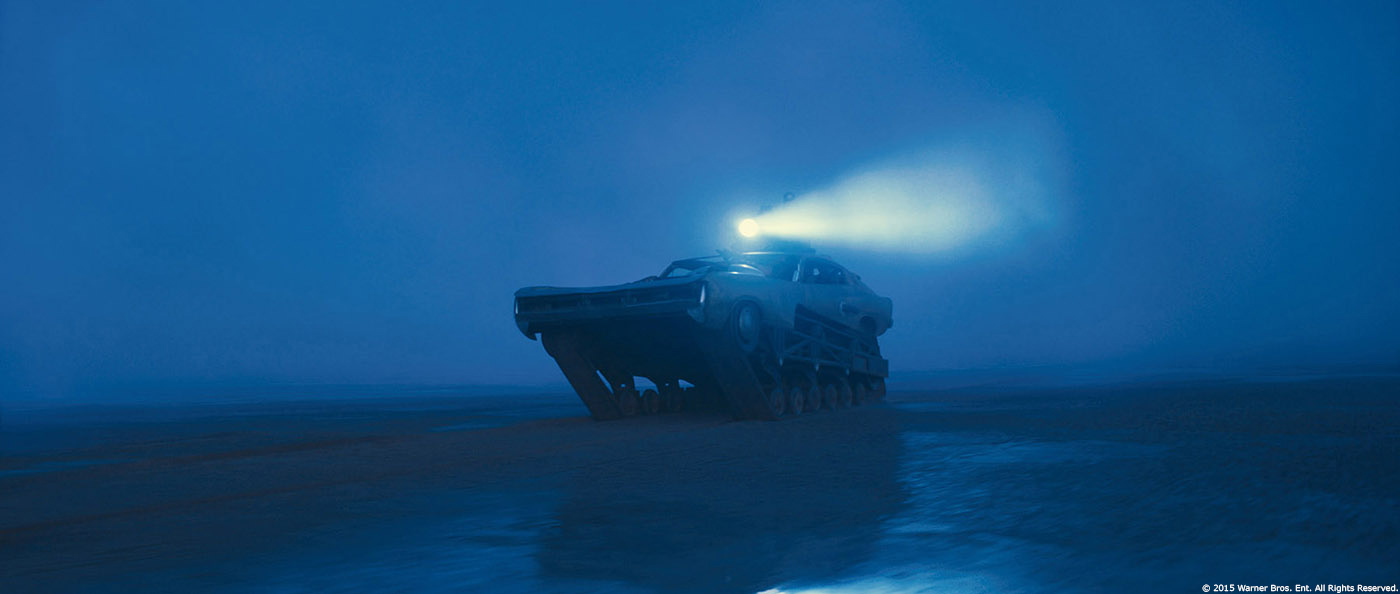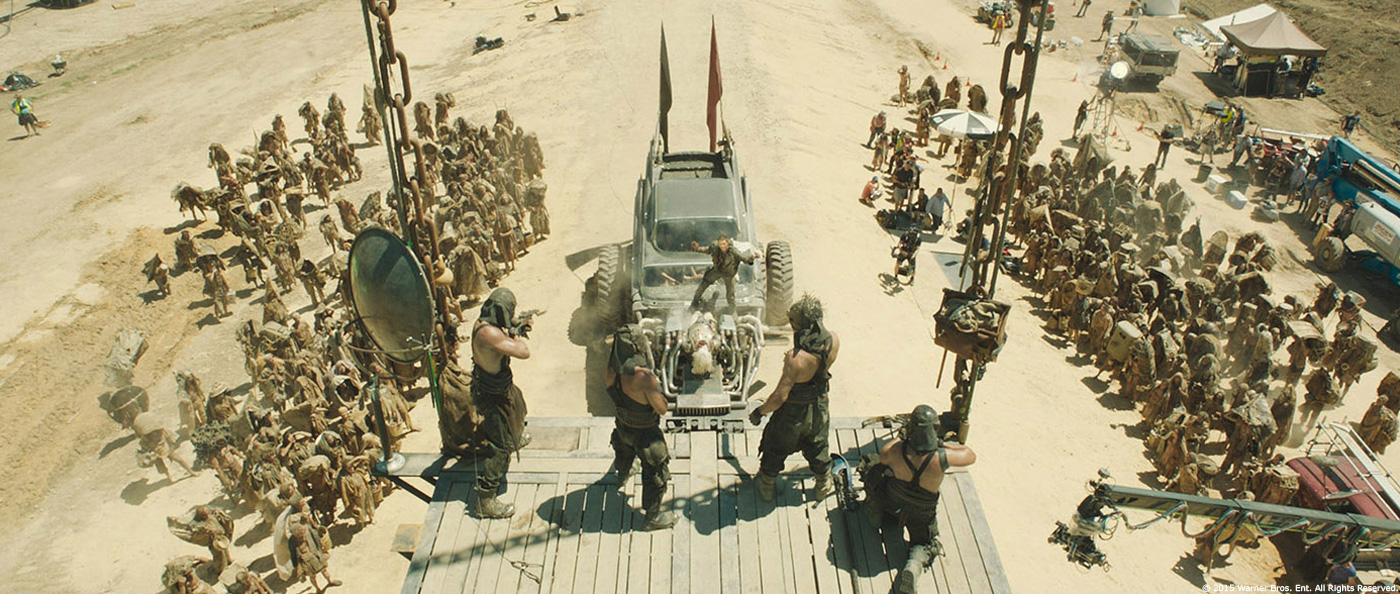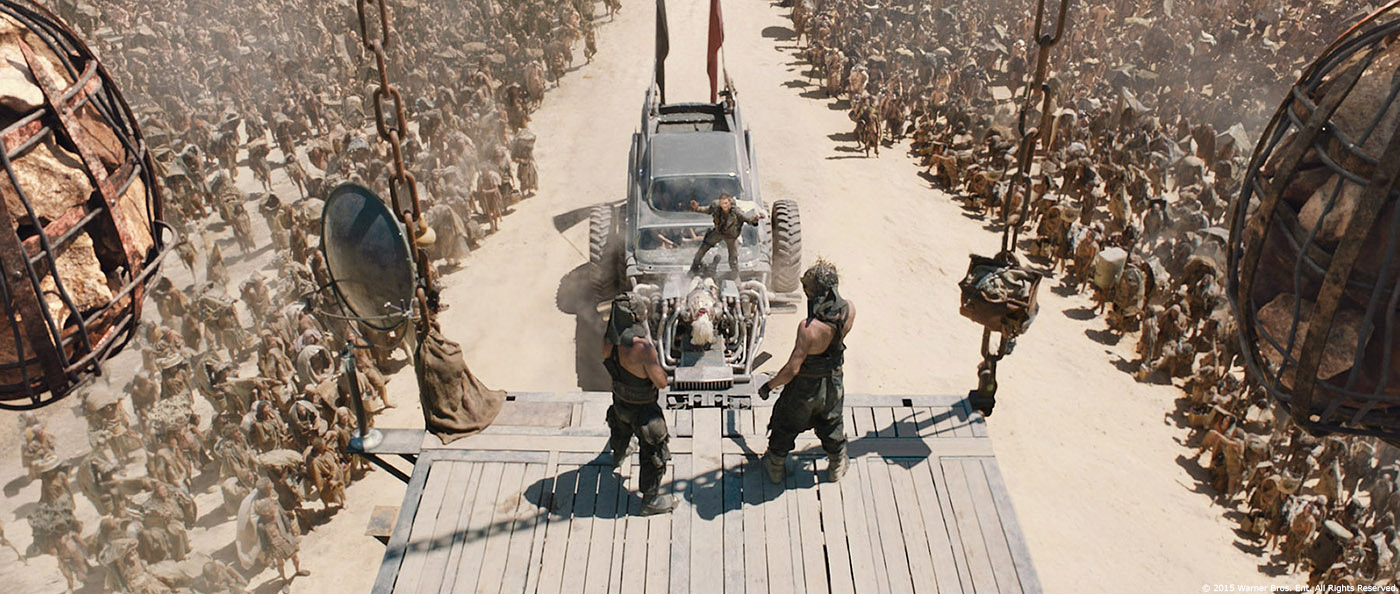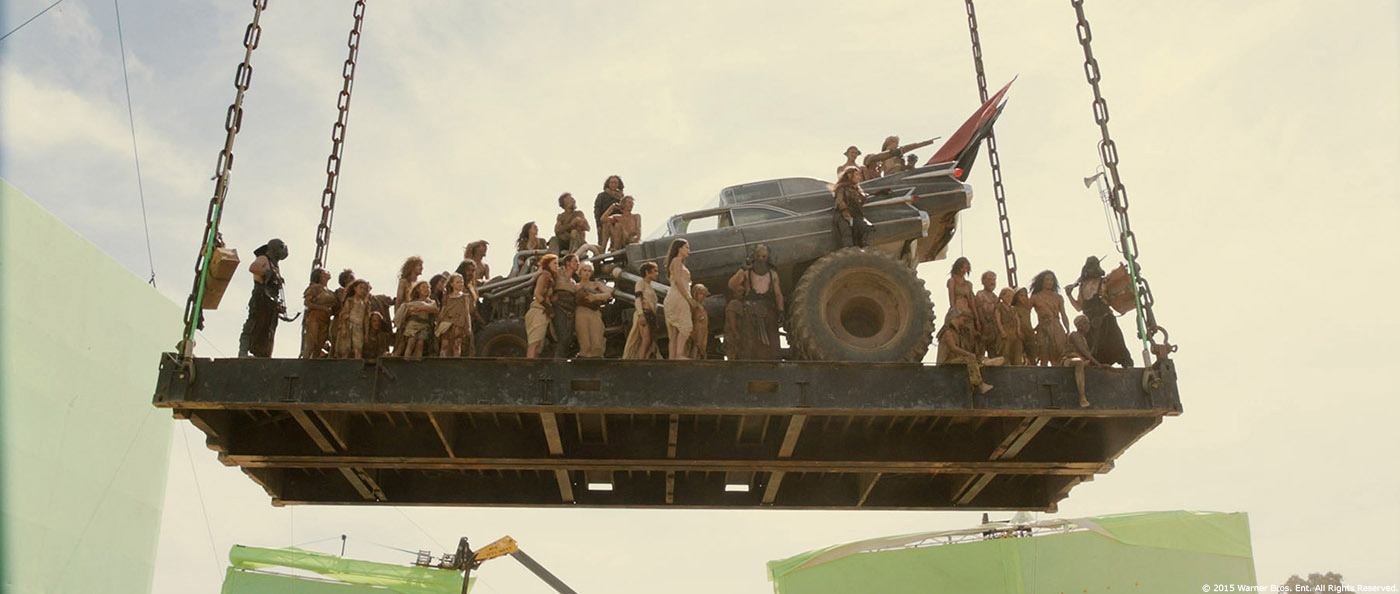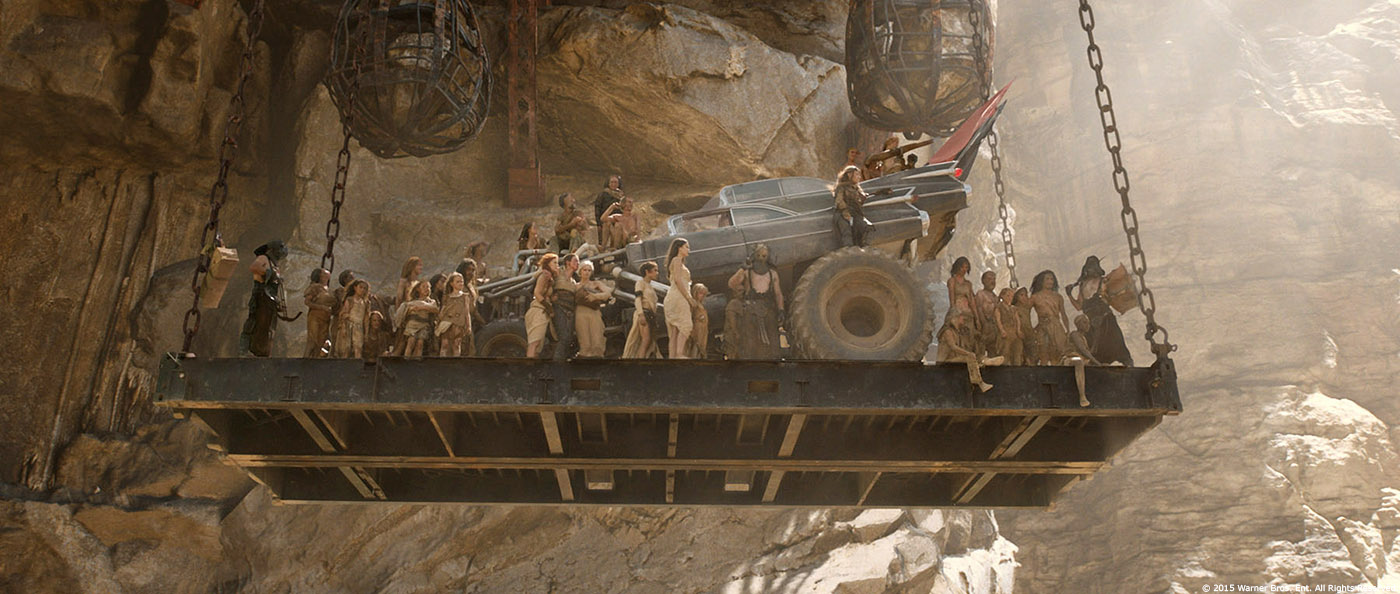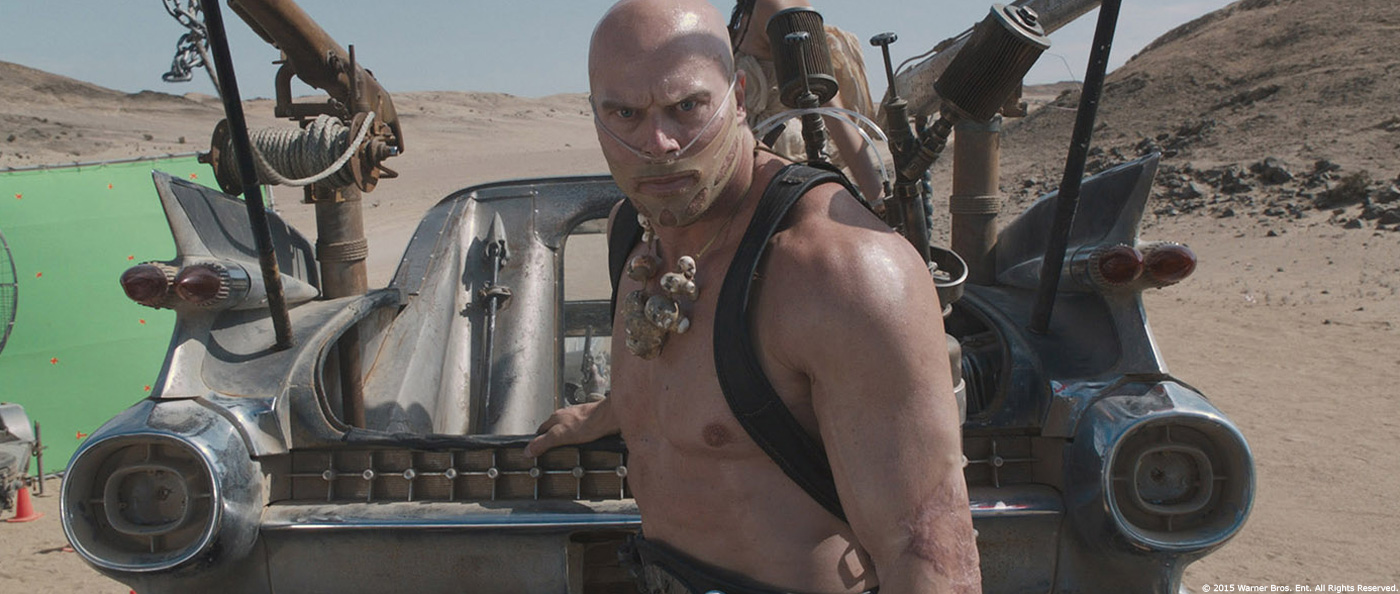Tom Wood began working in the visual effects as an animator at Cinesite on films like EVENT HORIZON and LOST IN SPACE. He then worked many years at MPC on films such as ENEMY AT THE GATES, HARRY POTTER AND THE CHAMBER OF SECRETS, KINGDOM OF HEAVEN or SUNSHINE. He then became independent and take care of the effects of movies like PRINCE OF PERSIA: THE SANDS OF TIME or MIRROR MIRROR.
What is your background?
I came through Art School in the UK in the late 1980’s with a penchant for procedural computer graphics. After working on graphics compositing systems, mostly on record covers, I moved into VFX as an animator at Cinesite UK. I was Creative Director there before moving across to jointly head up MPC’s film department. During that time I lead creatively CHAMBER OF SECRETS, SUNSHINE and KINGDOM OF HEAVEN, through to 2008 when I went independent to supervise PRINCE OF PERSIA followed by MIRROR MIRROR. Family ties brought me to Australia and MAD MAX at Iloura.
How did you and Iloura got involved on this show?
I was hired by the then Method Australia, now Iloura, to helm the show while the shoot was still in progress in Namibia.
How was the collaboration with director George Miller?
George has been wonderful to work with. He is a model client in that he can define clearly enough what he wants, allowing us to respond rapidly. He is generous with praise and very collaborative, but he also knows his mind and will push, if necessary, to get what he needs.
What was his approach about the visual effects?
He and Andrew Jackson, the show supervisor, had the approach of practical first, over everything. This worked very well for such a huge show that has a very practical heritage to maintain. George was very aware of the possibilities but reigned in the excess that can easily occur with VFX. Every VFX component or shot had to have some practical grounding. Either it contained practical elements or was surrounded, at least preceded by, practical in-camera elements.
How was this new collaboration with Production VFX Supervisor Andrew Jackson?
Andrew and I got on very well. We both played to our strengths producing a broader, fully realized world.
Can you describe one of your typical day during shooting and post?
Days in post, I did not attend the shoot, consisted of dailies sessions, critiquing current shots, followed by re-reviewing the numerous video notes sessions from George to ensure direction accuracy. I’d then have free time to catch up with specific artists to give more notes. Once a week we would finish off with a trip to George’s office and screening room for a 4-8 hr review session.
Can you tell us more about the previs process?
Previs for this show was handled prior to my arrival. This had been worked intensively by George over a number of years on and off. It outlined narrative, structure and staging very firmly. Sometimes previs can inhibit flexibility further down the pipeline, so we worked hard to present ideas on how shots could work while always keeping in mind what George wanted based on the previs.
The movie took place in many environments. How did you design them?
In almost every case the solid environment was sourced from a photograph if the location did not satisfy the story. The canyon approach was from one picture sourced by Andrew Jackson of Wadi Rum in Jordan, extrapolated to be a huge wall stretching to the horizon. The canyon itself was based on the Namibian location but made bigger by a factor of 10.
The Toxic Storm had no concept artwork originally, just a previs sequence with inverted cones denoting placement and scale of twisters. When I visited the shoot in Africa I had brought along some independently created concepts that were what I had imagined the storm sequence could be. The artists at Method London had conceived igniting fuel rising into the twister. Also they produced wide vistas of the storm exterior as a dark and dirty super cell cloud. George was shown these and, while he does not ordinarily like having concepts, loved them. As the sequences were cut, the artwork was used in editorial in the cut and the look pretty much stayed the same.
What references and indications did you received for The Citadel?
The Citadel is key to the story and George gave the Iloura 3D and matte painting teams a 3 hour brief outlining its significance and his specific requirements. He wanted to represent the medieval hierarchical system with the overlord living at the highest and most comfortable level. The wretched masses are at the other end of this spectrum, living in squalor in holes down on the ground.
It’s always worth knowing that this show has been in development for 30 years so there were 10+ years of drawings to reference. These largely denoting what not to do, however there were a small handful of images George was happy with which formed the basis of our look.
Can you explain in details about the creation of The Citadel?
Andrew Jackson had a very clear idea of how to create the Citadel using real rock formations. We agreed that entirely paint-created environments rarely look authentic. So we gathered still images from aerial shoots in the Blue Mountains to the west of Sydney and used Photoscan to create geometry. This was heavily processed to give us the final structures we see in the movie.
The opening scenes of the movie were shot in an empty reservoir surrounded by trees but were required to be in the cliff and cave enclosure of the Citadel. All cliffs and rock surfaces in these sequences are delivered by VFX. The single most difficult obstacle to overcome was lighting. The reservoir offered no shade and production provided two 40×40’ screens for some set ups when the wind was weak. This meant in post we had to choreograph light directions through the scenes to match in-camera light but also establish and stick to a recognizable lighting look.
Another key feature of the Citadel is the oppressed masses milling around at ground level. On-set gathering of extras in costume gave us textures and Massive allowed us to produce, with a week’s worth of roto-anim, an authentic, lethargic crowd eager for water. Carefully considered path mattes made sure they would act in a cow-like herd, following familiar paths and bunching tightly when necessary.
The car chase go through a major sand storm. How did you approach this sequence?
This sequence was delivered to us as an incomplete post-vis construction. The cut was solid and as noted already, twisters were laid out. Huge amounts of real twister footage was sourced and picked through to get the visceral effects we all liked. The main, large twisters were 3D volumes, almost entirely shader based, allowing internal lighting. These were then wrapped in multiple, dense particle simulations that connected to the ground and sky. The sky was a 3D, animated matte painting created in Photoshop and assembled in Nuke.
As the plates were shot in full sun, the vehicles were tracked and partially re-lit in CG. The ground was often replaced to give greater speed and an un-driven, clean look. Onto this we added layer upon layer of individual dust simulations. Ground dust that looked like arctic ice racing close to the surface, rivers of dense dust up to window height, large, dense clouds of roiling dust the vehicles swept through and a huge volume that gives a modulation to visibility into the distance. On top of these we added CG and shot element grit and light variation to immerse the camera into the experience. Lightning strikes were added as light sources, casting shadows onto and lighting through the dust layers. These had a whole series of choreography passes reviewed by George to accent the action, building to the final crash-endo.
Can you explain in details about the creation of the various destructions and FX?
Apart from our work in the Toxic Storm our destruction and FX work was used as support to the in-camera effects. Andrew Jackson had shot many dust elements on location to be either used directly or as reference. These were used as the basis for our simulations for additional dust requirements. Many shots were photographed with stationary vehicles and required a “sim-trav” look. The dust elements and FX passes were used constantly in an invisible way to blend these shots into the run of action shots.
Imperator Furiosa have a mechanical arm. How did you created it?
During the shoot Charlize wears a large prosthetic arm and under that she had a long, green glove. We match-moved her arm, painted out the green sleeve component and tracked in our pre-built arm model to fill in the gaps. We had modelled the arm completed but very rarely needed more then the centre portion of the mechanism. However, when Max meets Furiosa, they fight at a time she is not wearing her arm. For this sequence we had to design and create the stump that is concealed by the mechanical arm. This required more work as it turned out as the look of the stump had not previously been considered.
The movie is full of crazy stunts and special effects. How did you enhanced them?
There is a crazy number of stunts in this movie and they are predominantly in-camera. We were required to enhance with CG digi-doubles for only about 20 shots where the stunt was too much or just outright impossible. There were the obvious wire rig removals, harnesses and SFX rigs, but we were mostly making the vehicles look like they were driving faster, about double their actual speed. This often required us to replace the ground and add FX.
Can you tell us more about the digital doubles?
Our major work with digi-doubles was in the Toxic Storm where the War Boys are ripped from the tanker and chase car by a twister. George specified he wanted real world dynamic simulations of the bodies and linked us to horrific car crash videos from the web featuring real people. We too sourced motorcycle crashes, trying to ensure the victims survived, as reference for body motions in extreme situations. What we established quite fast is that using Endorphin to do real world motion simulations does get you to an accurate representation that matches the real world footage. However, we, as an audience are not used to seeing this in an entertainment environment. The wind-milling action of someone completely out of control is not compelling or involving in the context of fiction. We are used to seeing stuntmen performing, reacting or compensating to their motion with an often self protecting motivation. This is the language of motion we associate with in film. So under George’s direction we controlled with specific animation the digi-double action, giving them consciousness, allowing them to struggle or even over perform as a stunt man or gymnast would.
A major explosion happens during the final car chase. Can you explain in details about the creation of this impressive sequence?
One of the chase trucks is a mobile petrol refinery. It gets punctured and burns during the chase finally exploding as Max gets off in the nick of time. The explosion is all in-camera, covered from multiple angles including aerial but driven on remote and on its own in the desert. Andrew Jackson had then gone with 2nd Unit to shoot all angles covered in the explosion but this time with the chase vehicles that should have been surrounding the tanker. This meant that in post it was a relatively simple job of integrating the plates to give the illusion the explosion happened in a crowd of vehicles.
Max has visions of his past. How did you design and created them?
George gave us free reign on one of the initial corridor chase shots to create Max’s insanity. We put a number of our senior compositors onto the shot to come up with some ideas. George picked out 2 looks for us to combine and the job was done!
What was your feeling to be involved on this iconic franchise?
The MAD MAX movies have a very significant place in the Australian film psyche, this movie has been anticipated so intensely here in Australia, there is a huge responsibility felt by everyone on the crew. I had enjoyed the MAD MAX movies in my youth but never expected to be involved in the franchise. So it was a great pleasure to work on this one as an Englishman.
Did you want to reveal to us any other invisible effects?
It really is a testament to the Stunts and SFX teams that pretty much what you see is what they shot.
What was the main challenges and how did you achieve it?
Overall I think the main challenge was accommodating George’s schedule, while keeping focus. We had a 30 month post in the end which is an extraordinary length of time to be working exclusively on one show. Scenes would be turned over to us one by one and we would set our own deadlines to apply the right pressure to the team. A project of this structure could easily spiral the budget out of control, but by adapting our team size constantly we kept on track. Creative focus was a different concern. Fortunately the sequences are so different, but they follow the central thread, so each one brought fresh challenges and looks. George has an amazing capacity to hold it all in his head and keep us on track.
Was there a shot or a sequence that prevented you from sleep?
There are always shots you wish had worked out better and for some on this show we were able to go back to improve. But you need to be able to let it go and experience will guide to that point. I was extremely impressed with the final movie, with sound and music, and this reinforced this view. Shots that were still bothersome flashed by or your eye and sentiment was guided by the narrative and performance making my paranoia remain that.
What do you keep from this experience?
I guess what I take away from this show is the enduring skills of the team here at Iloura. We’ve had staff come and go but also kept a core team throughout. I’m always impressed by true talent and these guys have it.
How long have you worked on this show?
30 months.
How many shots have you done?
We worked on 1979 shots with 1695 making it into the final cut.
What was the size of your team?
The team size peaked at around 150 across our 2 offices, but ran steady at around 60 or so most of the time.
What is your next project?
Iloura is currently in production of Seth McFarlane’s TED 2 for Universal/MRC which releases in June and Alex Proyas’s GODS OF EGYPT for Mystery Clock Cinema, due for release in 2016. Other than those, we have some other projects lined up but we’re unable to announce them yet unfortunately.
What are the four movies that gave you the passion for cinema?
In no particular order:
David Lynch’s DUNE. I loved the intense attention to tiny detail in the design. The world was a complete world down to buttons, much like George Miller’s attention to detail here. It all counts.
STAR WARS. Obviously. Another world, complete.
ROBOCOP. The Verhoeven original. I loved the audacity.
TRADING PLACES. I don’t know why, but I can watch that show over and over. It may be that I saw it at a particular age and it stuck. I love Eddie Murphy and Dan Ackroyd in that show. It all just worked, even the poor quality ape prosthetic in the finale, I forgive you.
A big thanks for your time.
// WANT TO KNOW MORE?
– Iloura: Official website of Iloura.
© Vincent Frei – The Art of VFX – 2015


